#this is a very important thing in film and shows which are Visual media
Explore tagged Tumblr posts
Note
Howdy, Heidi! You said that some fans picked up things that were done on accident… Were there more scenes like that? Also, were there scenes that you guys made on purpose but fans didn’t pick up / were aware of them? In shipping terms (hihi) and in general terms. Thanks!
I think in every type of media you will inevitably see versions of 'authorial' intent vs audience interpretation that overlap and differ from each other in many ways. (Authorial intent in quotes because in collaborative mediums like film and animation every single person on the pipeline who touches the work probably has a slightly different personal interpretation they're contributing to the final work, even under someone like a showrunner or a director).
Humans are smart and it's in our nature to look for connections and find explainations to questions, so most of the time if someone is putting something down, someone is going to pick it up, so to speak, and a lot of things ARE on purpose.
But this same phenomenon can also lead to us seeing connections in places that even the 'authors' might not have originally thought of while creating the work, and I think that can be pretty neat actually! I don't necessarily think reading alternate interpretations of works is wrong-- it can be very healthy to explore multiple reads of a narrative or a character/character dynamic. On Chaos Theory there were definitely times when we were like 'fans are probably gonna ship this even if it's not the text' haha. Sometimes fans latch onto headcanons you really have no control over. Sometimes things were animated slightly differently from how they were conceived (which is also a natural part of things).
But yes, sometimes I have seen a few other things that were interpreted in slightly different ways from how they were directed or written verbally, but I'm personally of the opinion that it's more fun to leave some things visual and open to a little interpretation rather than beating the words over the audience's head and having the characters constantly announcing 'I'm feeling this because of this!' And going 'this is the only way to interpret the show and the characters and if you don't you're wrong!'
It's usually not a huge deal. I think even as we were working sometimes I'd make connections to myself that weren't necessarily spelled out to us and go 'oh, this is a throughline for this character actually!'
Like for example- if I remember correctly, the original direction behind how Kenji reacted to Ben's apparent death was that it was supposed to the first time he'd ever seen someone he really KNEW seemingly die right front of him, and being unable to do anything about it deeply affected him. Ben is a very important turning point in his character development regardless of which way you read it.
And I think this is actually something that just continued to stack onto his character throughout both shows whenever any of his friends lives are seriously in danger. In Camp when he's still unable to do anything but comfort Sammy while she's poisoned, to deciding it's too dangerous not to trade Wu's laptop for Brooklynn, to eventually throwing himself between the spinosaurus his dad is about to kill Darius with and choosing his friends over his own father and being willing to die with/for them... and then in Chaos Theory it kind of reboots all over again with Brooklynn dying and then his dad dying right in front of him, and his complex of not wanting to be useless and trying to do whatever he can at the expense of even himself to keep the loved ones he has left safe is kicked into overdrive.
I think there are a lot of things like that where the intent is not always verbally spelled out, but the more important thing is that it's still (hopefully) making you feel something.
#anyway tldr there always are but I don't think it matters all that much usually#part of the dance of doing a show is offering things up for interpretation and hoping folks pick up on it#I think that one shot I in Camp did also just haunts me because I felt like I accidentally contributed to 'queerbaiting' at the time#but having been on both the creation side and the fandom side of shows now#when fans toss around accusations of queerbaiting and all that in fandoms I'm in it just makes me tired now ajjdjd#and honestly personally some of my favorite ships are not canon and are from things that have long ended and will never be canon#but I've always had some of the most fun with those because folks tend to get more creative with fanworks for ships that aren't canon#my controversial fandom conclusion v_v#I will just end things by saying sometimes 'authors' intend for things to go in different directions than fans want or interpret#and I love shipping as much as the next person#but it can be good to step back and examine stories and characters from a non shipping view sometimes too#both? both. both is good#Sammy and Yaz were always shipped by everyone on the crew though lol#jurassic world chaos theory#jwct#jurassic world#chaos theory#chaos crew#storyboard artist#camp cretaceous#ask#anonymous
59 notes
·
View notes
Text
Our Youth Final Thoughts
Important edit added March, 5, 2025: It was reported (or at least I found out about it today) that the actor who portrayed Haruki in this show, was accused and arrested by Hong Kong police for SAing a translator after a fan event. It should go without saying, but I'll say it anyway, that is absolutely reprehensible behavior, and I hope his victim is able to get justice. If this knowledge affects your desire to watch this show, that's understandable and very fair. Shows like this are the unified works of dozens of creatives, and they do deserve to have their work appreciated, and things like this happening create even more barriers to queer stories being able to be told. I put this in simply because I don't want anyone walking into this story, identifying with this character, and the. Finding out later and being disheartened and disappointed, as I was.
I don't actually think I've posted much about Our Youth on here, but I finished the series over the weekend and wanted to talk about my overall thoughts.
There's so much I loved about the show. It's the first show in quite a while that I actively felt excited to watch every week. It's a trope that I'm often a fan of the 'bad boy with a heart of gold' and the 'nerd'. I did describe the show to a friend as 'what if Bender and Brian from the Breakfast Club ended up together?' which isn't the most inaccurate tagline, but is certainly not the most contemporary.
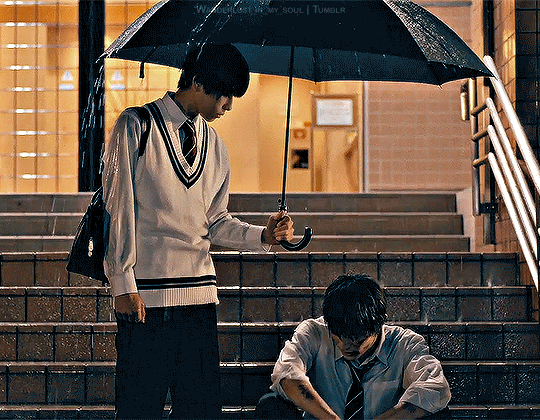
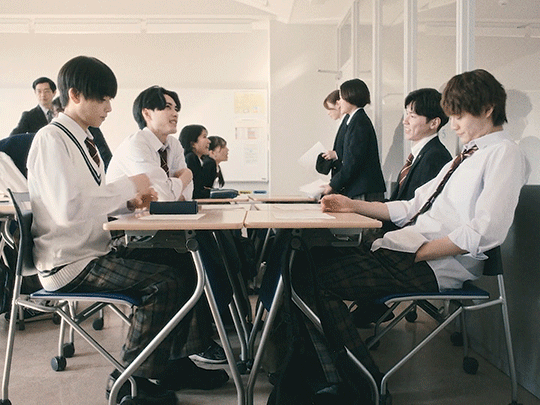
There's so much to talk about. I'll start by saying that one of the things that I really appreciated, that spoke to me about the series is how integral queer media is to the story of the characters. Haruki seeing and finding comfort in a queer film, this film being one of the sources of strength he has as he survives the abuse of his father, and eventually opens a door for him to become a filmmaker and tell his own stories is beautiful. It so clearly showcases how queer media is life-changing and life-saving for many queer youth.
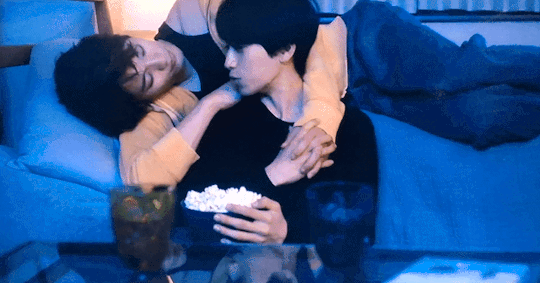
There's also this element of telling your own story. We see that directly with Haruki's films, but it's also present in Jin's writing. I think one of the most heartbreaking things we see there is that Jin's story is never 'public', we don't see Jin take a chance there. But there is value in him finding the courage to give Haruki a chance to read his work. Sometimes there's victory in trusting just one or a few people, it doesn't have to be all or nothing.
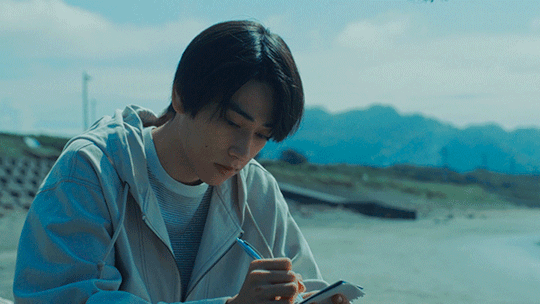
Another theme or topic brought up in the series, particularly in the finale, is marriage equality. I've been taking in a lot more Japanese BLs this last year than I really have Thai BLs or Korean BLs, Taiwanese, etc., and I've seen this brought up more than previously. It's not always as direct as here, but it's there. Seeing over the last 2-3 years marriage equality brought to the forefront in Thai BLs, and now in a matter of days we'll see the new marriage equality law go into effect there, that it kind of gives me hope. I know the societal pressures are different there, and in a lot of ways it's a don't ask, don't tell situation, but consistently bring up the topic, normalizing queer love, both in queer media and in mainstream media, helps to create a path for that progress.
tumblr
Another aspect I think is well done, though not perfect, is how the time jumps are handled with-in the story. By my figuring the story spans a bit more than a decade, and when creating, and specifically casting that, it can be hard not to create something where you feel like it's teens playing dress up as their father's by the end, or adults acting unconvincingly as children in the beginning, but there's a good balance here, at least with Jin and Haruki. I think part of the stems from the actors ages, Jin's being only 20, and Haruki's 25. that age difference allows Jin to look HS age, and him being believable as young lends credibility to Haruki. It's also almost a visual shorthand for Haruki to look older while they're in HS because he basically had to 'grow up' quickly, leave his childhood behind because of the abuse of his father. Once they move into the university years, they're basically the age of university students, no suspension of disbelief needed, and then in the final episode with that flash forward, it's not unbelievable to think they'd look somewhat the same. Contentment and happiness will hold off a lot on the aging process.
So to move beyond these kind of larger, more impactful concepts, lets get in close and talk some about Haruki and Jin as characters and a couple. The story kind of sets them up to be opposites, but they're more of a mirror of each other than anything. Both suffer from the neglect of their parents, distanced both physically and emotionally, and it's pretty draining for both of them. I think it sets them up to almost recognize each other in a way. Once they both take those small steps to open up to each other, we see the way they treat each other with so much care. There's moments where both are a bit rough around the edges, especially in the first handful of episodes, where they kind of let their emotions overwhelm them, but in most of their interactions, even starting in that first episode, they're so gentle with each other. I really started to pay attention to body language and how characters interact with each other after my no subs watches of Taikan Yoho, and it was to a level here that it was really noticeable or noteworthy.

That gentleness from both of them, that willingness to reach out, even when they're still so young and unsure, shows so much care. These are two boys (in the beginning) that don't feel loved, much less truly valued. The way the treat each other shows that they value the other. They value their thoughts, their feelings, and even the others' future, to the detriment of their own emotional wellbeing. That's a really hefty gift to give someone, and I think they only really feel comfortable doing so because it's reciprocated, even from the very start.
Taking them separately, we'll start with Jin. Jin is easy, he makes himself easy, he doesn't cause a fuss or an uproar, he just exists quietly. Which when you look deeper, when you take the time to look, to see, you see this incredible loneliness in him. What makes it frustrating as a viewer, is we see him having active discussions with teachers, there's opportunities there for people to recognize what's going on there, but the unfortunate thing is that obedient children are kind of overlooked. And Jin often overlooks himself. He's not necessarily shown to have ambitions on the same level as Haruki, but it reads to me more than he's not really allowed himself to really think about his dreams. He's lived his whole life with this understanding of what the expectations are, and so why would he ever seriously considered something outside of that. It lends the finale it's own bittersweetness, because we see Jin choose Haruki, to decide to take that leap, and while he may not be doing it as boldly, but in his own sort of mild, unassuming way, it's still Jin putting his desires first, and that's a triumph on it's own.
To talk about Haruki, Haruki is heartbreaking. Specifically because the way the narrative is presented, we don't know the full story until we're half-way through and already half-way in love with him. We see him through Jin's eyes in the beginning, beautiful, mysterious, almost unfathomable, and as those first few episode pass we start to see a little bit more. The shift in episode 5, now seeing in the story from Haruki's perspective is a rude awakening in many ways. It wasn't that we didn't have empathy for him before, we certainly did, but seeing so blatantly what he was dealing with hits hard. And it wasn't just about the physical abuse he had been dealing with, which is horrific on it's own, but the way Haruki was so close to giving up. The scene I can't get out of my mind is him saying "Whenever he beat me, I decided I wanted to die." That lack of desire to fight to survive shows how much everything had been wearing on him for so long. When he starts to know Jin, when he starts seeing that a future is possible, we see that fight start building up in him, and it's a relief to see. I found myself after episode 7 feeling so frustrated with him because we we had basically watched him be used and abused by his father OR sacrificing for others. We see him having made the choice to not reveal what he's dealing with to his mother, he decides to take the fall and get suspended from school, with the assumption being that he feels that Jin will be better off without him. He doesn't want Jin to choose to stay instead of studying abroad, because he knows Jin has a bright future and he doesn't want to affect that. But for myself, with the perspective of age, I know that there's hope, that Haruki has a future. So I was very in my feels after all of that.
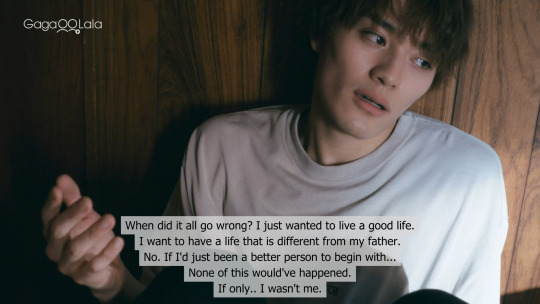

After our time jump into university seeing Haruki now actively pursuing his dream is a relief, with its own counterpoint of sadness as we are seeing Jin pursue a degree he has no passion for. It's all part of what makes this story so affecting, I think. Life is not all hope and rainbows, but it's also not all loneliness and pain. And there's a realism in choosing a future that's steady instead of taking a chance, the same way there's realism in pursuing a dream that seemed unreachable, knowing that there is a safety-net for you if things don't work out.
To talk a bit about what I didn't like- their parents. All of them sucked. Yes, arguably Haruki's dad was by far the worst, being a raging alcoholic who was physically abusive to his son for likely at least a couple years if not more. But even Haruki's mother doesn't get much sympathy from me, though we do see that Haruki holds no grudge for her (because of his fucking self-sacrificing bullshit). Jin's parents, I almost have no words for. There's an acute lack of interest from both, but we'll talk about dad first since I have less to say about him. It surprises me that Jin's dad is as emotionally distant as he is. We see that Jin has a great deal of respect for his dad, he appreciates and has an interest in his work, but his dad never thinks to build on that. I just find it odd. As far as Jin's mother, she's physically a bit more present, though I feel if you asked her flat out if she loved her son she might have to stop and think about it. He's basically a to-do list in her calendar, something that needs to be checked on and checked off, and I wonder how bad it was before the start of the shows timeline. It's not good that a teenaged Jin is being left for weeks at a time on his own, but when did they start doing that? It's a common trope for young Japanese children to be self-sufficient, and it's so open ended that my mind can't help but picture 8, 9, 10 year old Jin being left for days. But he's good, and obedient, and that's just life, so he goes on, and how heartbreaking is that?!? And I'll be honest, I was genuinely surprised to see her texting Jin in the final episode when we've flashed forward. When it feels like neither of them actively work to keep that bond intact, how was it still there? I suppose the answer is duty.
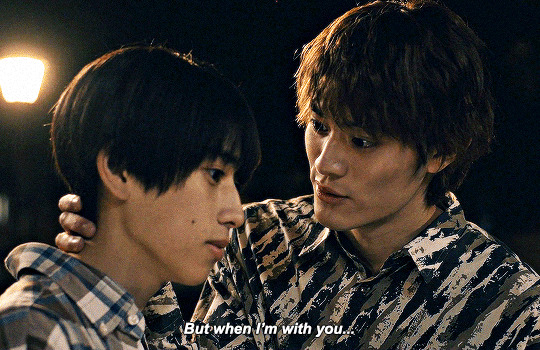
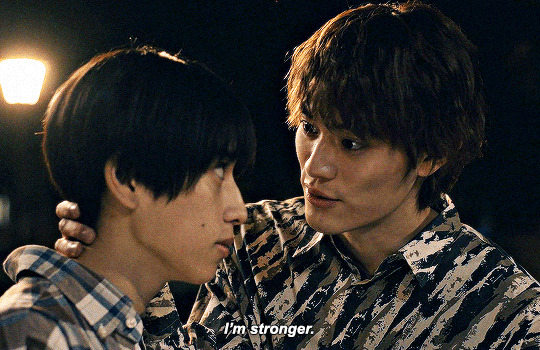
The emotional and physical trauma both Haruki and Jin deal with, I also didn't love--because it made me an absolute emotional wreck. I have some mixed feelings over how some things were handled, or specifically how most things were not at all handled. The resolution for a lot of the issues that we see is no resolution. Yes, we see that the emotional connection forged between Haruki and Jin is a beacon for both, enabling them to weather their individual storms, once that concept is established, it kind of drops off to nowhere. It's not even that it's built upon to the point where they both become self-sufficient or confident in themselves, it just is there, then in ep 7 (I think) they just go their separate ways and we're never shown that they're still affecting each others lives. We're shown that they're still in love with each other, that the other is still in their thoughts, but not how their experiences helped to shape them directly. It's worse with Haruki's father's death. It's an INSANELY traumatizing event, and it's almost treated like "well now he can't beat him any more and he can go live with his mom and everything is fine", and like...WHAT? Setting aside for a short moment the fact that being the one present at the loss of a parent even an abusive one, is gonna be traumatic, there's so much emotional distress and grief that comes from losing an abusive parent, especially as a child. Because it's not just grief of the person, it's grief of the unknown. Could there have been a future where his dad got sober and they had a happy life? A time where his dad became what he had been before? A revisit of that loving father? So you're also working through that loss also, and that's really not even a blip of a thought it feels like.
My final thought is something I didn't like, because it made me sad, but also still makes sense within the narrative, and that's the fact that we never see Jin or Haruki come out. I know we get tired of coming out stories, and I didn't need a dedicated scene or episode showing either coming out, but in the final episode where we see the friend group come back together we're shown in no uncertain terms that they are not out to them, & even more that their friends don't know they're dating each other. And I think that sucks. I think it's reasonable and understandable that either might not be out to their parents (though fr your dad makes gay movies Jin--so why not?) or to coworkers and acquaintances, but to have friends you've seen and known for more than a decade and you're still afraid? That's so sad.
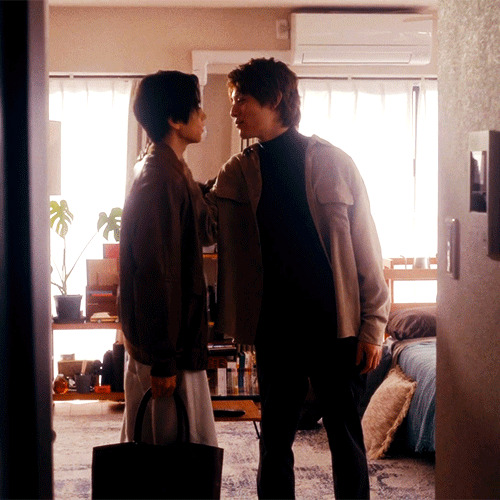
Overall, the word I might use to describe this love story is unassuming. It's not necessarily bold, but steady, which is something both characters need. They went through their teen years with different versions of upheaval and loneliness, and in the end they have each other, they have work that supports them, and they feel like they have a future, and that's something I think their teenage selves could have never even imagined.
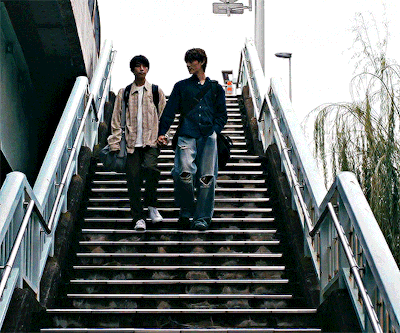
Thanks for reading.
*Also, I pulled some pics/stills whatever from @colourme-feral who has an excellent series offering more context to the subtitle translations. Absolutely amazing, and I definitely recommend checking them out if you haven't.
Link: https://www.tumblr.com/colourme-feral/search/miseinen%20translation/original
#Our Youth#Our Youth the series#Miseinen: Mijukuna Oretachi wa Bukiyou ni Shinkouchuu#Kamimura Kenshin#Motojima Junsei#Haruki x Jin#Jin x Haruki#HallieSMeta
28 notes
·
View notes
Text
Taylor Swift frequently references other media in her work in a number of ways. Visual references to films like Wizard of Oz in her music videos, auditory references to Jimmy Eat World in Clara Bow, Dead Poets Society references in TTPD… I speculate she uses dozens if not hundreds of pieces of media to add context to her songs and performances.
It’s important to remember that at her root, Taylor is far more than “just a pop star” or even “just a performance artist.” At her root, Taylor is a storyteller, and one who has an enormous array of methods and modalities of storytelling. Writing songs is just one.
Because of this, because Taylor loves cramming as many layers of meaning as she can into every word or phrase, and because Crestfallen by Smashing Pumpkins is one of my all time favorite songs, it didn’t take me long after discovering Champagne Problems to wonder…
Wait. Does “Crestfallen on the landing” have multiple layers of meaning?
Not just “I’m feeling Crestfallen while I’m standing here on this landing” but also…
…the song Crestfallen is literally playing (or metaphorically running through her mind) while this event is occurring?
And so that got me just considering Champagne Problems more through that lens, adding that context of Crestfallen, taking two of the most heartbreaking songs from two artists I love…
(sometimes I think I just enjoy breaking my own heart)
And especially because I have always viewed Champagne Problems as a karma-type scenario, a tale of 2 engagements/marriages. One where Taylor leaves her muse standing alone, one where her muse leaves Taylor standing alone…
And Taylor understanding in that moment, finally, the pain she’d caused.
Now look, are these literal engagements/marriages, are they another instance of Taylor explaining business using relationships as metaphors, are they maybe less formal in the sense that they’re less weddings and more agreements to come out together or handfastings or agreements to be more exclusive or to prioritize the relationship over the career?
Who knows if we will ever know, the way Miss “keep it secret, keep it safe,” “every bait and switch was a work of art,” “I can show you lies,” tends to write and rewrite and contextualize and recontexualize everything in her life. And hell, it may even be more than 2 specific scenarios being discussed here and she’s talking about events that have been cyclical in her life…. *throws up hands*
Either way, It’s interesting to consider and it’s heartrending if you layer the added sentiment of Crestfallen atop it.
And it’s also interesting cause Crestfallen came out in 1998 and I know a lot of people theorize Taylor wanted to release a rock album named 1998, and that she’s Easter egged that year in the past so media from this year may be of specific interest to her.
And look, I’m probably never going to have significant evidence that she deliberately intended this, beyond a “general vibe”
But also… I don’t really care? One of the things that has been the most fascinating about developing theories surrounding the Taylor Swift Multimedia Universe and trying to figure out which albums and films and songs and poems and books and performances are being referenced by Taylor in her art and albums and performances is just…

The process of the theorycrafting is exceptionally fun. The process of considering media in the context of Taylor’s art and looking for evidence that they’re connected is extremely fun.
It’s fun in that way a lot of us have lacked since we were in school writing book reports and film analyses for fun.
It’s also fun in a very nostalgia-pilled, memecore fashion that no it’s Becky would absolutely vibe with. And remember: Taylor is seemingly simultaneously existing across many eras right now. She can’t use her social media to meme the way she used to.
But she’s still memeing. Hiding clips and references to all her favorite franchises in her work.
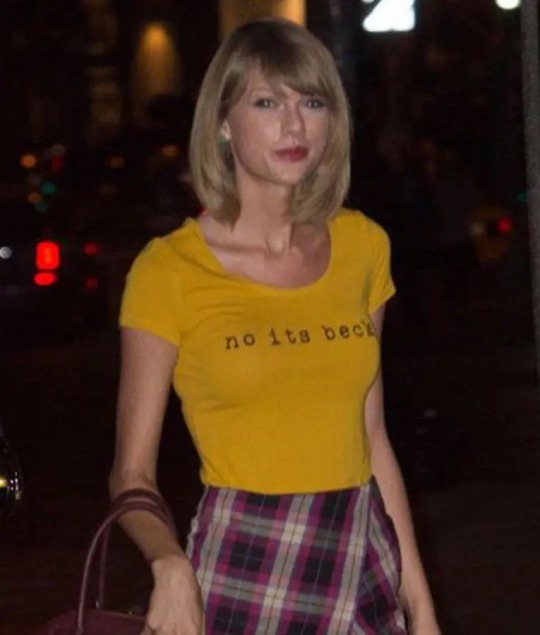
I dunno what point I was trying to make; I kinda just got high and info dumped into my tumblr sooo sorry
20 notes
·
View notes
Note
hello..👋👋
as someone who wants to get into arthurian legends.. where do you think I should start? is there a precise canon to follow? oh and.. this might be a stupid question but.. how would you describe guinevere's and lancelot's relationship...? i personally really like them because of what I've heard online, but i got shamed for liking it a while ago from people who really hated guinevere and said gawain or galehaut(not sure if i spelled it right) would be better for lancelot..
Hello anon!
I have a Beginner’s Guide to Medieval Arthuriana pinned on my blog. There’s no precise canon to follow, but you’ll get the most bang for your buck reading the works of Chrétien de Troyes and the Vulgate Cycle. Much of what Chrétien developed ended up in the Vulgate, like Lancelot rescuing Guinevere from kidnapping, but there are more elements added from other stories, such as Lancelot’s upbringing in the lake which originated from Lanzelet by Ulrich von Zatzikoven. On the other hand, Yvain’s journey as Knight with the Lion doesn’t make it into the Vulgate, so that’s worth reading on its own.
Regarding the part about people shaming you: block them if you haven’t already and anyone else who does so in future. I’m terribly sorry those people were unwelcoming as you begin to read and learn about Arthurian Legend. Let that not reflect on the community as a whole—there’s many lovely people here that’ll be happy to help you along. I hope you’re able to cultivate a positive online experience to the best of your ability and start enjoying the legends with us! :^D
But back to the fun stuff—I also really like Guinevere/Lancelot! My favorite dynamic is when Arthur is included too, but Guin is my number one pick for Lancey. ;^) It’s hard to describe them in so few words but I think it’s important to establish that they’re friends. This is an oft overlooked aspect that really deserves attention. They care for each other deeply. She helps him out of his madness and he helps her out of danger. This is something Arthur couldn’t do for either of them, much as he wanted to. That’s what makes the pair special, to me.
As for shipping wars about medieval characters….kinda ridiculous! And shaming other people over it is just abhorrent. I’m sorry you had to deal with that! Personally I enjoy Arthur/Guinevere/Lancelot and Galehaut/Lancelot. I think it’s obvious I favor Gawain with his wife Ragnelle lol but Gawain/Lancelot is fine too. Gawain can have a little Lancelot. As a treat. I even enjoy “crackship” type pairings, like Bedivere/Lancelot or Kay/Lancelot or maybe a little [unrequited] Agravaine/Lancelot, and if the author or filmmaker chooses to write her in a positive light, Elaine/Lancelot as well. But that’s just it—there’s certainly no such thing as a “better” person(s) to couple with Lancelot. It’s literally fake. It’s fiction. It’s for fun! Doesn’t sound like the people you’ve encountered were having very much fun and put that on you, which was wrong.
Here I’d like to mention I run a discord server called the Arthurian Theater Server. Every weekend I stream TV shows and movies, mostly Arthurian, sometimes random fantasy. But it’s more than visual media—my friends and I share resources, character playlists, art we made, stories we wrote, we’ll liveblog retellings or newly discovered medlit translations, and discuss anything else Arthurian! We have custom made emojis for all the knights and ladies, a variety of original art stickers of the characters provided by several members, and an array of sounds bites ripped from films and TV for the soundboard to be played while streaming. Tumblr can be a little hard to navigate with the unreliable tag system, so this server is dedicated to an organized and moderated exchange of ideas and content. You’re welcome to join us!
Let me know if you have any other questions, it’s never a bother. Take care!
#arthuriana#arthurian legend#arthurian mythology#arthurian literature#queen guinevere#guinevere#sir lancelot#lancelot du lac#ask#anonymous
38 notes
·
View notes
Text
I’m just going to have to accept my place at some point— accept that the aural is always going to be an inherently less engaging medium to catch people’s attention. Going to have to accept someday that there’s nothing like putting a film out there, no matter what the budget; a low-budget shoddily made visual thing, a film, a TV show, a documentary; what have you, will probably always leave audio an inferior and less catchy medium. You can speak your heart out, you can make as many radio documentaries. At the end of the day what is going to catch people’s attention is the Kneecap (the film)s and the Complete Unknowns of this world. Radio docs can’t ever hope to touch those dizzying heights, nor tbh do books and written stuff. All this personally pertains to music, and I’ve been thinking about it as a music journalist myself.
No one reads interviews anymore. It’s a lost art. People are subscribing to magazines (print or digital) as a purely preservationist move: they want this form of media and journalism to survive. Also it’s skimmable I suppose. It’s not often a particularly inspiring medium to convey ideas about music. Hey, though the famous saying goes, writing about music is like dancing about architecture (this is an actual and widely quoted saying, actually). Fine. Accepted. What about music through audio, does that not seem appropriate a medium?
Nope. Not shareable. Not relatable. I’ve spent years trying, god knows I’ve talked to some really interesting people even at my infantile levels of being a journalist, but audio is so opaque. You can’t ‘search’ it, you can’t share a snappy visual that doesn’t require people to actually listen for a full minute—60 seconds of your time! Even as audio is the medium to which music belongs, musicians simply cannot belong to it. You can’t tell who’s who, you don’t know what the musicians look like, a visual (and often important) element of how musicians present is lost.
It’s got to be films then, hasn’t it? Kneecap’s compelling story could never reach as many people on the many, many interviews they’d done recounting the very same over the last 6 years at least. They have been around for a while. Since 2017, in fact. But it was the film, the visuals accompanying it, that actually brought it to a wider audience and made Kneecap household names. A Complete Unknown too, like I’d mentioned. Reintroducing Dylan to a generation, reconnecting others with their love for the man and his life.
And, I guess, I am on tumblr right now after all, so it’d be amiss not to mention. The humble GIF. Ironically, the GIFs, muted, looping animated frames, are what can propel a lot of musicians to website-wide stardom sometimes. What a selling point GIFs have been, of so many media, on this website. (I think the visual being so strong is also why I see, for example, way more people willing to gif out, idolise and follow the fictional band in We Are Lady Parts than actually listen to bands like The Muslims or Habibi, draw fanart of Hobie Brown from the animated Spiderman film than listen to Crystal Axis. Who, FYI, put out one the best grungy rock tracks I’ve heard this year.
Why people will follow a rebellious-smirking, leather jacket-wearing fictional character than a real-life punk band. If I were having a cynical day (and I try so hard not to, it’s self-defeating! It does nothing to help anything I’m doing!) then I’d say this website cares more about fictional characters they can dream about than wanting to give a shit about real people making art in the present— or real people in general. But I try not to. I acknowledge that visuals are powerful, and embellished storylines can be more compelling than real life.)
But that brings me to my lament: many, many real people have incredible stories to be told. Someone once said to me something like, all musicians have something a little wrong with them, because the desire to stand up on a platform and tell stories and open yourself up to emotional vulnerability, to visibility, to ridicule, takes a certain kind of illness and incredible courage. People that get up on stage DO have a story to tell. That’s why they’re out there singing on their own words. In their voices. About the lives they live and those around them do.
But they’ll never be told. Filming is still high budget. I could script out a band’s life and write it in a book (you know I could. Some of you already know I’m capable of dragging things on with every minute detail). I could narrate and produce an audio documentary about it. But it’ll never be as powerful as what can be done with a film crew. The reach of visuals is beyond what anything else can convey.
So many incredible stories will be lost. It’s happened before, of course. When Sam Sutherland wrote his book Perfect Youth, about the history of the first wave of punk rock in Canada in the late 1970s, he was the first to attempt a comprehensive history of Canadian punk. This was in 2012. Shocking, right! The UK and US scenes were way better documented: films about the Sex Pistols and the Clash ensured the London scene was enshrined in legend forever. The punks of Manchester were documented (in no small part thanks to the fact that some of the biggest stars of indie, post punk and New Romantic music of the 80s were Manchester youth punks in the 70s). The NYC scene is extremely well documented, where would I begin. But in Canada, many of its original troublemakers were dead, had moved on, had never recorded their music and were now.thousands of kilometres across the country, and the venues were long shut, repurposed or bulldozed. Montreal’s ‘first punk band’, the 222s, only have a few surviving recordings out there because a presenter on a campus radio station in Montreal they has one done a session for, had found he never threw their tape away. The only surviving recordings. Many others weren’t that lucky, even when (similar to Manchester), Montreal punk in the 70s provided a playground for some of the best-loved indie and pop rock bands of the 80s, like the Doughboys and Men Without Hats. Canadian punks in the 70s hadn’t had the awareness of legacy, nor the sort of money it’d take to record vinyl, much less have a camera running. Nothing was saved.
It’s a similar thing with bands today, even though equipment and editing software is relatively cheaper. Many people feel filming bands is a bit of sunken effort. We host one of my country’s biggest film festivals, and I never see student filmmakers taking part in the music video programmes. These are fully funded. Sure, local bands will do the portrait cellphone Instagram reel recording, but barring a single viral video that does not guarantee people listening to your music, it’s not quite the same as properly shot camera footage.
(Often with viral reels, it seems people blow up for things that are at best adjacent to their music. A video shitting on the role of the bassist in the band. A drummer complaining about how long everyone else takes to set up their pedalboard. Singer being a diva. ‘Guess what instrument this member plays’. It doesn’t really tell you the story behind a band, nor guarantees they’ll listen to your tunes. One too many a viral band has had scores of angry ‘fans’ yelling at them that they’ve posted their latest single ‘too many times.’ Hello?? Entitlement much?)
I don’t know what the solution is, to be quite honest. We’ve done filmed radio sessions, and while in theory you’d think people like those more than just us saying ‘hey this is on radio (audio) tomorrow morning!’, in reality people don’t care quite as much. They leave a like on our reels and move on, 10 people will actually follow on to the YouTube, and that’s often band members their proud dads (I’ve been followed by so many proud dads, I’ve awwed). So people leave. It’s a thankless job. Unless you’re KEXP it’s not really rewarding either. And I’ve kept it running for two years, but I’m not immune to burnout, or what you could call ‘yelling in the void’ fatigue. I feel stupid doing this stuff, sometimes. I’ll never tell anyone because it’s my job to keep the morale up, but it’s rewardless and sometimes tiring. Not that you expect anything out of it.
Maybe better video editing software, or better graphics processing will make this task easier. In the meanwhile, I guess don’t lose heart? I’ve written this out textually, and that means if anyone at all has read this far, then text isn’t dead yet. Takeaways? Don’t succumb to ‘my generation is shit, no one’s interesting anymore.’ They are. It’s just really hard to reach you through the algorithm. So I say, pay attention locally. There’s nothing like going to a great local show for $7 and seeing quality hidden gems. You can talk to them after the show even! It feels like cheating to have access to it. Someone will eventually do it. In the meanwhile, keep heart. And big up, Rich Pepiatt.
#Music#thoughts#long#One more thing actually: filmmakers mean the world. You guys bring stories to life.#musicians#films#film#filmography#cinema#movies#bandom#musicblr#Kneecap#a complete unknown#bob dylan#we are lady parts#across the spiderverse#hobie brown#Also you don’t have to read all that. Tbh. It’s a midnight rant.
8 notes
·
View notes
Note
fav french media? (films, books, shows, games etc)
OH I LOVE THIS QUESTION THANK YOU SO MUCH 💖
I’m sure I’ll forget a lot of things and smack my own forehead in shame afterwards, but this is what comes to mind right away:
Literature:
Anything ever written by Victor Hugo is a masterpiece. This dude was a terrible human being, but he sure knew how to write, and he contributed to major changes in the social conscience of his contemporaries on many important topics (including but not limited to the death penalty and child labour). To give you a taste, here is my favourite poem ever, which he wrote, because of course he did.
My favourite piece of literature across all categories, though, is and forever will be Cyrano de Bergerac by Edmond Rostand — the story of a man who convinced himself his unusually long nose makes him monstruous. The concept sounds so silly, I know, but this play is a masterpiece and a wonderful love letter to the French language.
Which brings me to my favourite comic series: De Cape et de Crocs by Alain Ayroles and Jean-Luc Masbou! Basically a twelve-volume-long fix-it fic, disguised as a tribute to French literature. Also, a beautiful bromance.
Visual arts:
Basically everyone in France can quote at least one line from Kaamelott, a comedic (?) series derived from the Arthurian legend. It is so well researched and hilarious — until it isn’t.
I’m sure there’s like, a very obvious movie choice that will come back to me in a minute, but I was raised on Disney and Scooby-Doo, so these are clogging my brain at the moment. Just give it time.
When I was very young, I would watch TV at my grandparents’ and enjoy Les Hydronautes, an animated series about an extraterrestrial explorer documenting the Earth’s marine wildlife in an effort to learn how to better protect her own planet (Aka There Are Many Benefits To Being A Marine Biologist: The Series), as well as C’est pas sorcier, a series of very fun documentaries on a plethora of subjects, from lavender farming to volcanic eruptions.
Obviously, Miraculous gets a place on the list too! ���🐈⬛
EDIT BECAUSE I FORGOT: Fantomette the animated series! This show is single-handedly responsible for my taste for smart women with amazing hair who ride motorbikes and kick ass. It even had Egytpology as a key part of the plot.
Music:
For me Formidable by Charles Aznavour is a classic, a very cute song, and a great place to start if you want to learn French!
A few other favourites include Fanny Ardant et moi by Vincent Delerm, Le Dîner by Bénabar (extremely funny to listen to while thinking about the Diamonds’ Dance) and J’ai cherché by Amir (This one is… Borderline when it comes to grammar, but cute enough that I grin and bear it. Also, it got us an honourable ranking at the Eurovision a while back, which is rare enough to be celebrated).
ALSO. I complain too much about bad translations and poor writing (see previous bullet point) not to show you kids how it’s done with Je vole from Aladdin (a genius play on words which delves into the two significations of the verb “voler”: to fly or to steal).
Video games:
Long ago, before I discovered the wonderful world of Nintendo, I would wait patiently every month for the new issue of Toboclic. This game had everything: cute animal mascots, stories, mini-games, arts-and-crafts suggestions, catchy songs, interactive documentaries… I’m sure my parents still have the CDs somewhere, but they probably don’t run anymore, which is a shame. I miss my friends.
Thank you so much for the ask, this was so fun to write!
@dragongutsixofficial please do this too so we can compare notes! 👀💖
90 notes
·
View notes
Text
Review: Wish (2023) [SPOILERS]
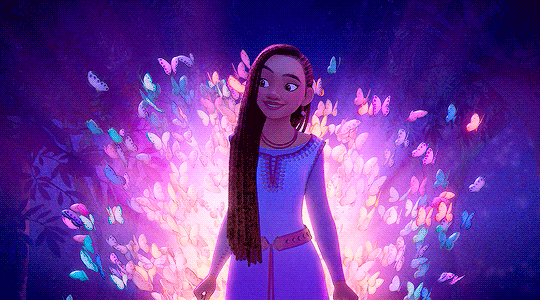
Evening, everyone! Tonight my mother and I went to go see Disney's most recent film, Wish, which fortunately came to theaters in my area right before its formal American release date. I'd been very curious to see how this tribute to Disney's last 100 years of filmmaking would turn out, and now that I've seen it...well, I have to be honest, I was a little disappointed. I want to be very clear both that I was going into this with a rather sunny outlook and that there are things I really liked in this film...but overall, it felt like a lot of the good ideas it had were only half-baked, and I found myself -- forgive me -- "wishing for something more" than what we got.
For a more comprehensive deep-dive...a cut!
The Good!
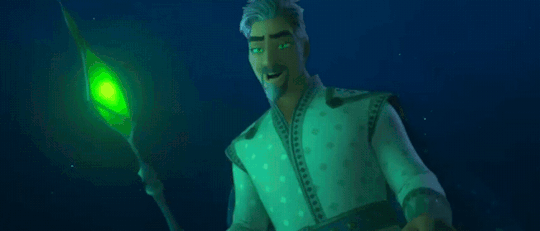
+The single best element in this film for me was Chris Pine's performance as our villain, Magnifico. There are definitely some things I can critique about Magnifico's overall storyline and "character arc" further down, but Chris was clearly having a grand old time being an egotistical, sassy jerkwad, and it totally showed. Even in his villain song This is The Thanks I Get?, which just screamed "passive-aggressive abusive parent," you can hear how much fun Chris was having in the studio, recording it. I just about always enjoyed when Magnifico was on screen, and I actually did really like the idea that a lot of his villainy is rooted in him being obsessed with control over everyone and everything. In a weird way, Magnifico's turn to the Dark Side parallels Anakin Skywalker's in the sense that he lost so much in the past that he's determined to never lose anything important to him again -- especially the power he's accrued to make himself feel strong, after having felt so powerless. I find that very interesting, and I kind of wish that aspect was really highlighted more in the story, but we'll talk about that later.
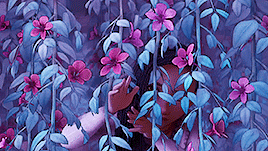
+Asha was a likable enough heroine, even if I found her to be a lot like a two-way fusion of Mulan and Anna placed in a vaguely Snow-White-ish role in her clearly Seven-Dwarf-inspired friend group. Ariana DeBose portrayed her rather well, both acting and singing-wise. I also liked the "social justice" bent to Asha's character where she wants better things not just for herself and her family, but also Rosas overall -- in the French translation of her main song "This Wish," they even push this further by having Asha wish "to see the world happy again someday." We haven't seen a heroine really express this kind of desire for a positive change in the world since Esmeralda in The Hunchback of Notre Dame, and that's cool! Plus representation in mainstream media for previously underrepresented groups is always nice. ^.^
+As much as I don't think they all got enough focus as individuals, I liked Asha's friend group! Especially the fact that it is a friend group made up of people that are around the same age as our protagonist, which -- let's be honest -- isn't that common for Disney heroines. Often with "sidekick groups," you're more likely to have situations like Cinderella with the mice (who are more like cutesy sidekicks than equals) or Snow White with the Dwarfs (who are all quite a bit older than our heroine)...so a friend group made up of peers with their own personalities and motivations was kind of fun.
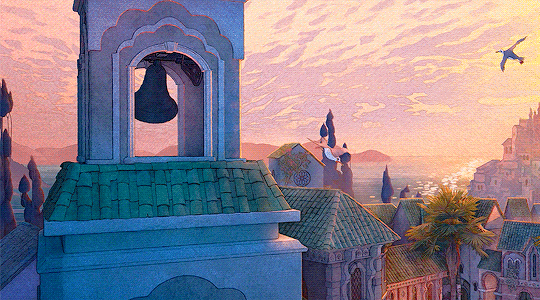
+The setting of Rosas itself could be pretty. I liked a lot of the Mediterranean-inspired architecture, especially inside Magnifico's tower.
+The combination of 3D and 2D-esque animation was also interesting! It really served to give the film its own distinctive visual style that sets it apart from other Disney projects, which I always appreciate.
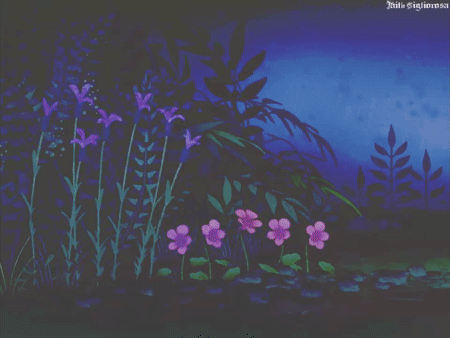
+Star was...cute. Obviously just designed to sell plushies and definitely reminded me way too much of Kirby, but cute enough. I do think it's kind of cool that they're never gendered at all in the entire movie, because it'd be silly to think of a sweet little androgynous ball of stardust as being specifically male or female.
+I liked the idea of Simon "betraying" Asha, only to be turned into a pawn by Magnifico in the process, but not being treated unsympathetically by the story for it. Didn't love the full execution of the idea, but hey, that's what the negative section is for.
+The idea of everyone finding the power inside of themselves to stand up against Magnifico (because they're "all stars," and presumably all have the magic needed to make their wishes come true) was a little predictable, but still sweet. I have problems with how the film wrote it (which we'll get to), but the idea itself was wholesome and fitting.
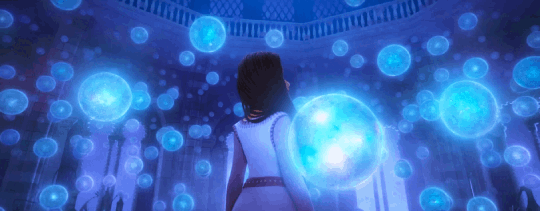
+I like several of the songs, just on their own -- I added This Wish and Knowing What I Know Now on my ITunes as soon as I first heard them prior to the film's release, and now I've added At All Costs too: it's a really pretty duet! (Gorgeous work, Chris and Ariana!) I'll leave my praise here, though, because sadly the soundtrack is going to get a lot of discussion in the less positive section.
The Not-So-Good...
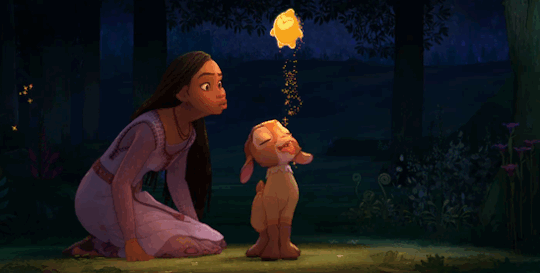
+This film being "Disney's 100th anniversary film" really got in the way of this movie telling a compelling and unique story sometimes. The whole movie really twisted itself into a pretzel trying to check off all the usual Disney tropes, and there were points that certain choices made the story seem incredibly stilted. For instance, one common Disney trope is a dead parent, so of course Asha has lost her father -- but we learn so little about him and he ends up playing such a small role in Asha's arc and story that it seems like an unnecessary detail. Asha's grandfather honestly plays more of a role in Asha's motivation throughout most of the film, so it would've made just as much sense to have Asha's grandfather be the one who believed in stars having power, rather than her father. Another example is the concept of the cute animal sidekick who's just there to make jokes -- as much as Valentino the goat didn't annoy me personally, he added just about nothing of value to the story whatsoever aside from comic relief, in contrast to other funny sidekicks like Sebastian from The Little Mermaid or Olaf from Frozen, who also serve a plot purpose and have a developed relationship with the protagonists. Then there's Asha being cut from the same "naive, awkward, wide-eyed idealist" cloth as many of our Disney Revival heroines like Anna, Rapunzel, and up to a certain point even Mirabel are; Star being in a similar vein to cutesy, innocent sidekicks like Pua, Crikee, and Baymax while Valentino is more akin to sassier, comic ones like Mushu and Sisu; her friends literally being based on the Seven Dwarfs from Snow White; our heroine getting a pretty standard "I Want" song and the villain getting his own solo number that doesn't really take any risks...oh yes, and we mustn't forget the trope of the Storybook opening, which (I'm sorry) I know was supposed to be a reference to Snow White, Cinderella, and Enchanted, but just gave me Shrek vibes the entire time. I was waiting for Shrek to rip out the page and use it for toilet paper any minute. It just felt a lot of the time like the movie was very paint-by-numbers, rather than throwing in much that was surprising or different.
+This isn't even touching all of the pointless meta references to other Disney movies. Asha wearing the Fairy Godmother's cloak and getting a wand like hers at the end -- the mushrooms crowing "we love crazy!" the way Hans did in Love is an Open Door -- Asha riding the reindeer the way Kristoff did in Frozen 2 -- Magnifico using green smoke hands a la Ursula -- the ending with those obvious Wendy and Peter Pan look-alikes, come on, really??? That was just painful.
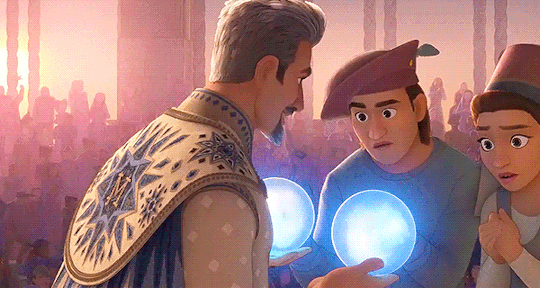
+As much as Magnifico was an awesome idea for a character and Chris Pine's performance was beyond entertaining, the movie did not always write him as well as they could've. From the very start, we see this guy is an egotistical control freak -- obsessed with his own image, incredibly hard-to-please, arrogant, vain, desperate for attention and unwavering praise and adoration from all of his subjects, and determined to keep an iron grip on everyone else's wishes because of the power it gives him. He's ALREADY a terrible person, from the start -- and yet the film tries to introduce this dark magic book that gets no explanation or backstory whatsoever and has no real characterization or presence, so it leaves no real impact on the audience corrupting him and making him a bad person, when it didn't need to! Magnifico was already the villain this film needed! Just let him fall head-first into madness without the book prompting anything! Even if Magnifico "lost everything" in the past, that doesn't make him a good person, if he takes everyone's wishes away from them and hoards them all to himself, only to grant a few now and again when it would make him look good.
+This above point actually leads nicely into one change I really, really wish the film had been ballsy enough to make -- have Asha already be Magnifico's apprentice, not trying to become it at the start of the story. Give our villain and hero a real relationship, with history that started before the events of this film! Asha lost her father at the age of 12...how interesting would it have been -- whether to make Magnifico more of an anti-villain or show how manipulative he really is -- if he'd tried to fill that fatherly role for our main character and twist her to serve his ends? What if At All Costs was rewritten to be about Magnifico not just being determined to hold onto all of the kingdom's wishes, but also this apprentice he sees as an extension of him and his legacy, while Asha is determined to protect this Star she's accidentally summoned and the suppressed wish of hers it represents? This change would've made Asha's break with Magnifico so much more powerful for both of them -- it would've both justified Magnifico's descent into madness and given Asha more reason to feel like it was her responsibility to stop Magnifico. You even could've then played more with Asha's relationship with Queen Amaya too, in this kind of a scenario.
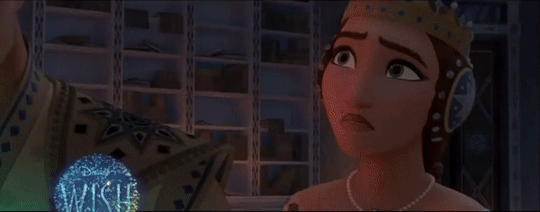
+Oh yeah, and on that note, Queen Amaya. OOH, this really annoyed me -- okay. So this woman is supposed to be a good guy, in this story. But as I touched on earlier, Magnifico was already a pretty awful person, hoarding people's wishes away in order to make himself powerful. Was Amaya truly so blind to that? Did she truly never question anything, ever? But no, really, she only turns on Magnifico after he starts using the dark magic book and actively threatens her. Only that makes her turn from him, and it's pretty damn immediate. Now okay, I hear you saying, it's like Amaya sings in Knowing What I Know Now, right? "The good in him, I've watched it melt // I was blinded by the love I felt"? Excuse me, lady -- but Magnifico wasn't a good person, before. He was just playing a part so as to stay powerful and adored by the masses. And if the story wants to claim otherwise, and act like that dark magic book was responsible for Magnifico going bad, then why would our Queen decide to keep him locked up in his staff's crystal forever? If the book was responsible, then Magnifico would be the Frodo or Golum to the book's One Ring -- he'd be a victim, in such a scenario: one in need of help and pity, not punishment. So either Amaya is a selfish person who only cared about her husband's mistreatment of others when it affected her, or she's a needlessly cruel person who decides to punish her husband for a vice that anyone could fall prey to. Either way, I don't want this woman ruling anyone! Make this woman a straight-up villain, same as her husband, and have the whole monarchy come crashing down after she and Magnifico both go down in flames! VIVE LA RESISTANCE! (Playing into my idea with Asha being Magnifico's apprentice all along, maybe there could even be a twist on the Evil Stepmother trope with Amaya, where she's jealous of how much Magnifico has tried to groom Asha as his apprentice, rather than spending time and/or starting a family with her or something.)
+As I touched on earlier, there wasn't even close to enough time to develop all of these characters properly. Since our heroine and friends are most similar to Snow White and her friends the Seven Dwarfs, let's compare cast size. Snow White is 83 minutes long and has a cast of ten (Snow, the Prince, the Queen, and the Dwarfs) -- Wish is 95 minutes long and has a cast of fourteen (Asha, Magnifico, Star, Valentino, Amaya, Asha's mum and grandpa, and our seven Friends). This results in us getting the vague idea that "Grumpy" role Gabo is sweet on our "Bashful" role Bazeema, but no time to develop their relationship or give it any kind of conclusion; the others saying "Sneezy" role Safi apparently loves the castle chickens with no sympathetic explanation why, to the point that he gets super excited about a chicken growing to a giant size for no real reason; "Doc" role Dahlia having a crush on Magnifico that is then dropped immediately after Asha turns against him; oldest kid and "Sleepy" role Simon feeling incomplete without the dream he gave Magnifico and "betraying" Asha as a result in an attempt to get it back, only to get stabbed in the back by Magnifico, and then have no time for a proper redemption after he's unhypnotized; Asha's grandfather turning on a dime about whether or not he wants to know what his wish was if Magnifico thought it was dangerous; Magnifico getting some justification in his backstory for his bad behavior, but Amaya's backstory being a complete black hole before she married Magnifico when you'd think it'd explain all the more why she stuck with him so long; and Asha's mum having her wish crushed to dust by Magnifico and then given back without us EVER LEARNING WHAT IT EVEN WAS IN THE FIRST PLACE, even after we see just about everyone else's wishes as soon as somebody picks it up and Asha's mum's wish gets picked up multiple times!! Come on, if you're going to set up NOT showing it, you may as well have a pay-off for it!! At least give us some moment where Asha's mum hugs her in relief and acknowledges that her daughter was her wish! That would've been a nice "aww" moment for everyone!
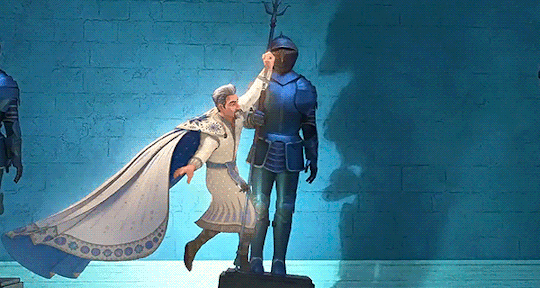
+Okay, I said I was going to talk about my problem with the songs, so here goes. As I said before, I listened to the soundtrack before watching the movie, and even when I did, I could immediately sense a problem: these songs did not tell me much of anything about the movie, just on their own. Welcome to Rosas, which is pretty much just an exposition dump about the kingdom and how Magnifico founded it, didn't really paint a picture of our setting or characters much at all, the way opening songs like Belle or The Family Madrigal do. This Wish, although pretty, was something I could hear just as easily on the radio -- it didn't feel as tied or necessary to understanding our heroine the way something like Part of That World does. I'm a Star, quite frankly, felt like a lot of inspirational word salad, rather than anything particularly memorable or revelatory -- why else wouldn't it even be worthy of a musical salute in the reprise, where Asha remembers that she and everyone else are stars during the climax? Even after reading summaries of the plot and spoilers from the storybook for this film, I could not figure out for the life of me how At All Costs would fit organically into such a story, being sung by our villain and hero. It wasn't until I saw the film that I saw how the filmmakers decided to fit it in and honestly...the song didn't help tell that particular scene at all. It's a really pretty song and I like it a lot -- but it lacked any of the irony or contrast that kind of a scene that introduces the difference in focus between our hero and villain required. If the scene itself is needed to understand what's supposed to be going on while the song is playing, then the song is not effectively telling the story and is therefore unnecessary. There wasn't even a particularly Spanish or Mediterranean flair to the soundtrack to help set the stage, aside from the occasional flourish of castanets -- instead it sounded very contemporary, which I guess is appropriate, since it was largely written by pop composers rather than any musical theater talent.
+There were also points where the songs felt the urge to shove in a bunch of extra words just because, rather than have the words flow well and really mean something. I'm a Star is most guilty of this, of course, but even in This is the Thanks I Get?, we hear Magnifico gripe that "I let you live here for free and I don't even charge you rent" -- mate, THAT MEANS THE SAME THING! If you live somewhere for free, then you are NOT paying rent!
+Knowing What I Know Now is a bop and I like it (aside from Amaya's stupidity), but I'm sorry, all I can think when I hear it is "This is clearly trying to be Ready as I'll Ever Be from Tangled the Animated Series, but that song blows this out of the water." However fun the song can be, it would've been so much stronger if it actually addressed the contrast between the characters and revved us up for a big final battle, instead of it just being our eight underdeveloped characters psyching each other up.
+The idea of everyone being stars was a lovely idea, but the execution of Asha remembering this fact and using it to defeat Magnifico was terribly handled. First off, there was no revelatory phrase or action that prompted Asha to remember this fact, so her suddenly saying that "they're all stars" came out of nowhere. Second, even putting aside that there'd be no way any of her friends could hear Asha from all the way up on the tower if they're stuck in the courtyard below, there's no reason I can see for Asha's friends or family to know what the hell she was even TALKING about. They weren't there when the I'm a Star number happened! And the way that number made it seem, just based on the visuals, it looked like the "star" power came from a person's dream, since it's the same glow that returns to Asha's grandfather when he gets his dream back, but most of the town's dreams have been already yanked out by Magnifico at this point! I think the idea is that since everyone is a star, even with that big piece of them and the power accompanying it taken out, they still have enough stardust inside of them to be powerful enough to chase their heart's desires...but yeah, I'm sorry, for all the word salad I'm a Star threw around, this world-building aspect was really not made clear, and because of that and the lack of a proper callback to this plot turn, the climax didn't hit as strong as it should've.
Overall, this film felt a lot like a batch of unbaked chocolate chip cookies that someone decided to throw a bunch of brightly colored sprinkles on top of, just because they could. A lot of ideas just don't feel like they were fully developed, and there was a lot tossed in that didn't contribute to the overall taste or bring the disparate elements together in a cohesive whole, instead feeling more like a distraction than anything of actual substance. That doesn't mean I couldn't eat it -- I like eating cookie dough as much as the next person -- but that doesn't mean it felt like a complete, finished product worthy of great praise. Instead I'm left looking at the wasted potential and wishing the movie had carved out its own path more, one distinctive to itself, rather than just be a mashup of previous Disney concepts and tropes. I won't act like there's nothing to like here, nor that it's completely lacking in heart: I actually would love to see fandom for this movie re-imagine it in ways that could've improved the story and characters, because there were SO many good ideas here...but for me personally, this movie left me colder than it should've and -- like Asha after meeting Magnifico -- a bit disappointed.
So I make this wish...to have Disney make a film better than this.
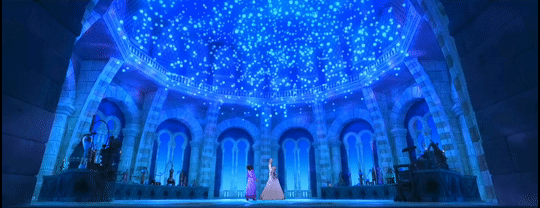
Overall Grade: C-
77 notes
·
View notes
Note
I've been wondering for a while- how did you start getting into all the colour stuff?? I would love an origin story <3 what got you into your passion for deciphering colors and how did you figure out what they mean??
sorry ik it's a lot but ever since I started following you I see colors everywhere and I'm curious of where you started noticing them ((: it's so fun and intriguing to me! I'm usually more of a "foaming at the mouth for the lighting" girlie but it's been a heap of fun figuring out colors with the lights ^^
thanks for everything you do to show us your eye for color btw ♡♡ your blog is so fascinating and I love reading all your theories and notes
@overrgrown, never apologize for asking questions, but I've actually been asked this before by bengiyo. You can find my write up HERE, but the short version of that post is I've always seen colors; therefore, I've always attached meaning to them, even if the meaning was not valid.
TLWR: Appreciate the artists who work on these shows, not me.
In bengiyo's ask, I stated that when I was younger, I thought the colors were showing me what was good and what was bad. That's it. In my defense, I was a kid, so everything really was good or bad in my book with no in-between.
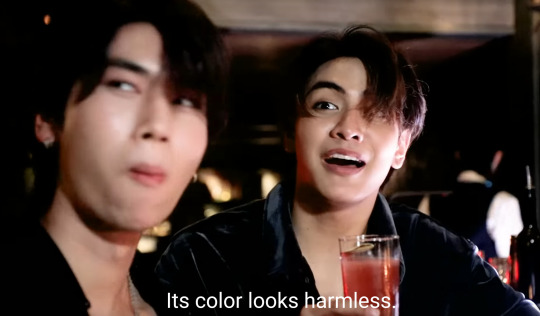
Even though I've always seen colors, and it comes very naturally to me, the meaning I attached to them when I was younger was very much based on who I was rather than what was being shown to me. Five-year old me thought if someone was dressed all in red that they were the devil. Adult me now knows that isn't always the case. Adult me also knows that red in American (United States) culture means something different than other cultures.

Not a flex, just a fact, but I have several degrees in languages, linguistics, and rhetoric. What they are in is not super important, but, in general, a formal education has greatly helped me infer meaning from what I'm visually seeing in the media I consume. My degrees are not in film or communications, yet I've taken undergrad and grad-level courses like Visual Media, Multimedia and Visual Communication, Language of Film, Digital Narratives, Cinematography and Lighting, Film Theory & Criticism, Queer Cinema History, Spanish Film & Feminism, and many more all because under this great big academic umbrella of rhetoric and composition lies storytelling.
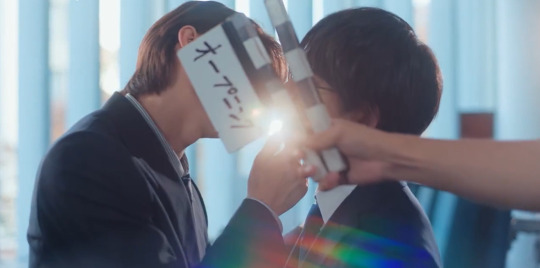
And that's what this is really about - How do we tell a story? Regardless if that story is a simple flyer for a school bake sale, a 30-second commercial advertising cleaning wipes, or a 12-episode BL series, how do we get the message across? We can't just rely on ONE thing! We have to use as many things as possible! So when I'm watching a BL series, I'm just not paying attention to the words being spoken or the acting alone. No, I'm paying to the background noise. What do the clothes tell me about the character? What does his apartment tell me about him? And what do the colors mean?! All of it is important!
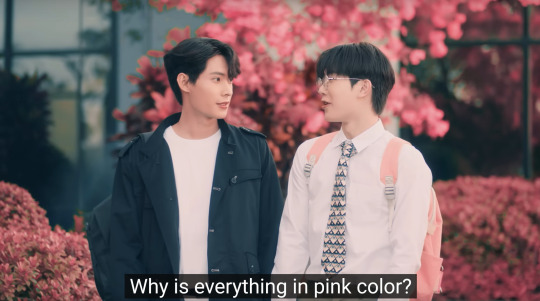
I've mentioned this before but I serve on a screening committee for a queer film festival. I actually got involved with the film festival as an undergrad because of one of the film courses. This has allowed me the opportunity to speak to several filmmakers about their process, and all of them have confirmed that the colors were intentional. People who deal with props and costume design have spoken to me about trying to find very specific items that reinforce the story being told. Oh, and theater is a whole different level. Because of the nature of the stage versus film, if it is on the stage, it must have a reason for being there.

Basically, people who work in visual media work really fucking hard, which you probably know since you love lighting. Most times, 12-hour days are the average, if not longer. This video does a good job of briefly covering the work that goes into costume design, and I timestamped it to begin at the part that covers colors.
youtube
I love seeing colors. I love deciphering them. I love the story they tell.
But they wouldn't be there if the hardworking people behind them didn't do their job, and those are the people who I appreciate.
So, as always, I'm thankful that you let me know I'm helping you see the beauty is in the details, but I'm really just here to admire the beauty with you.

#the colors mean things#colors are universal#so the fact that everybody color codes is a magical humanistic connection#even if we don't all recognize them#they still exist#and people work hard for us to see them#I'm just here to admire them with you
30 notes
·
View notes
Text
Stranger Things and the Male Gaze
In the second episode of season one, Stranger Things gives us a literal example of a character employing the male gaze, when Jonathan takes a snapshot of Nancy undressing through his camera.
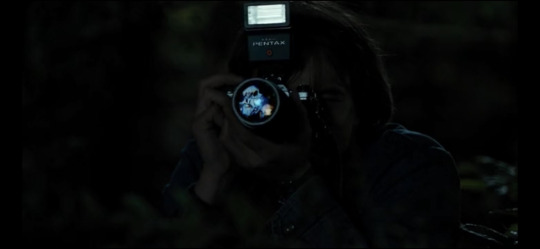
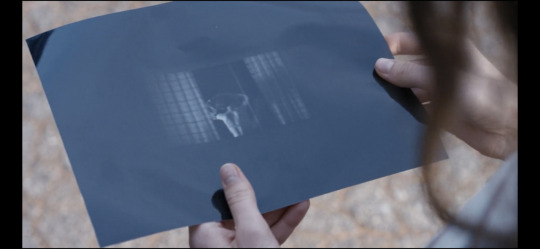
Following this creepy display of voyeurism (I'm sorry Jonathan, but it's what you did!) Jonathan turns his gaze to a similar yet very different subject— Barb.
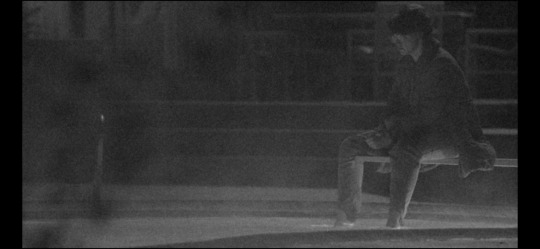
And it's after Jonathan asserts his gaze on these two subjects do they experience a point of "attack" from a male presence, eg Nancy has sex with Steve and Barb is killed by the demogorgon.
The term "the male gaze" was first used in film theorist and feminist Laura Mulvey's 1973 essay "Visual Pleasure and Narrative Cinema."
"In a world ordered by sexual imbalance, pleasure in looking has been split between active/male and passive/female. The determining male gaze projects its phantasy on to the female figure which is styled accordingly."
The idea of the "male gaze" can be a hot topic of discussion in recent film theory and film spaces, even with its legitimacy being debatable. But it's an idea that has been known within film for half a century and, for all intents and purposes, Stranger Things is made from a male perspective. Its creators are male, its producers are male, its directors are mostly male and its cinematographers are male. There are certainly strong female voices within the show as well, but the control of the narrative, like most mainstream media, is still male.
The idea of gazing within the show is present from the very beginning to where the series is now. We see the government spy on Joyce's phone call in episode one, the Man "with a capital M," as represented through Martin "Papa"— the government itself being understood as a male presence historically, and the other great-omniscient-male gaze present in the show comes from the Mind Flayer/Vecna.
Gaze as a Weapon
The male gaze is a sexual one, and it's a dangerous one at that. In her book on gender in horror Men, Women and Chainsaws, (yes I'm still reading this, reading the final chapter actually inspired this whole post) author Carol J. Clover writes:
"This is the narrative's present and casual gaze, its "doing" gaze. It is also, of course, a predatory, assaultive gaze—in the story's own terms, a phallic gaze."
Clover writes about the 1960's film Peeping Tom, which shares the story of a filmmaker who enjoys gazing at women sexually as much as he enjoys killing them, their bodies and gruesome deaths all captured through the crosshairs of his camera, which doubles as his weapon.

The idea of gaze or sight as danger or as a weapon is prevalent in the show. Papa forces El to spy on soviets, employing her as a weapon through the power of sight, Vecna utilizes hallucinations to attack his victims, and Kali weaponizes her ability to manipulate what people see.
To control the gaze is to have power and autonomy, and to be gazed upon is to lose that power. For example, we see Will enacting his own gaze through his own lens when he brings Bob's camera trick-or-treating. When Will is scared and sent into a true-sight vision, he drops the camera and thus loses control of said gaze. We later see Joyce gaze upon Will through the television screen as she replays the tape. This is also the moment when Joyce discovers the presence of the Mind Flayer.



In a similar vein, El has been subjected to being gazed upon and gains power and autonomy through sight. This is shown most literally during NINA, when El is subjected to Papa's gaze. Not only is he watching her as an omniscient eye through this whole process, but he is using tapes that were recorded and curated by him— Papa is literally the male gaze that is manipulating the narrative.
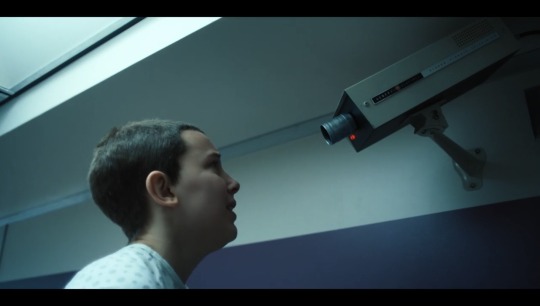
The strongest moment for El during NINA, the one where she gains new knowledge she never knew she had, is when she has a flashback where we see the world through her eyes, her gaze, and I think it's important that in this moment the person gazing back is another woman.
And after this experience, she shifts the narrative that has been given to her by Papa.

Gaze as Knowledge and Freedom
The way that El has learned about the world has been through sight. It's significant that part of this exploration involves looking at a television screen, in both seasons 1 and 2.
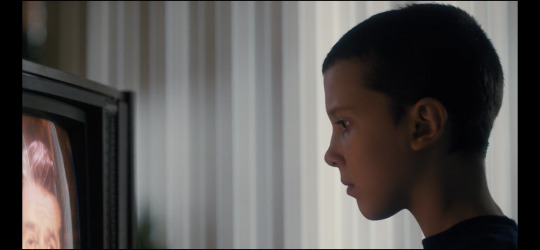
In seasons 2 and 3 El picks up spying on her own, which is something she brought over from the lab. But this time, without her gaze being controlled by Papa. While it's encouraged by Max (granted a female presence) using her powers to spy is something that El chooses to do.

While the spying is indicative of El's anatomical freedom, it's inherent invasiveness of this act, especially as she spies on the boys, is something that codes it as male. The idea of a "female gaze," while sometimes debated as real or not, is something that exists in modern feminist film theory. The idea isn't that it subjugates men under the power of women, a mirror of what the male gaze is, but rather "about using the presence of a female perspective on screen to emphasize the story’s emotions and characters."
But it should still be considered what gaze the show is made under. As stated before, Stranger Things is made from a male perspective, even with a female character at the lead. And perhaps this is why El's personal freedom feels male, since it's controlled by a male perspective. If the female gaze is pervasive then it is in indie-film spaces, and mainstream and commercial projects such as this show have been dominated by men for years.
Part of the male gaze isn't just the act of how the male viewer gazes upon women (scopophilia), but how the male viewer identifies with the on-screen female presence (ego libido). If El is meant to be the hero in a show from a male perspective, and arguably for a male audience, then perhaps her personal freedom and empowerment was always going to feel male.
But still, I don't think that El's gender can necessarily be completely ignored, or that the existence of the male gaze eradicates the importance and meaning behind El's empowerment and gain of autonomy. I think about a quote that Clover used to describe the maleness of final girls. If El is a woman, then her personal freedom, autonomy, and empowerment is not completely male.
54 notes
·
View notes
Text
Happy memories=Season 5: Addendum & Will foreshadowing
I already altered my previous post (link down below) a bit - I overlooked something: Lucas.
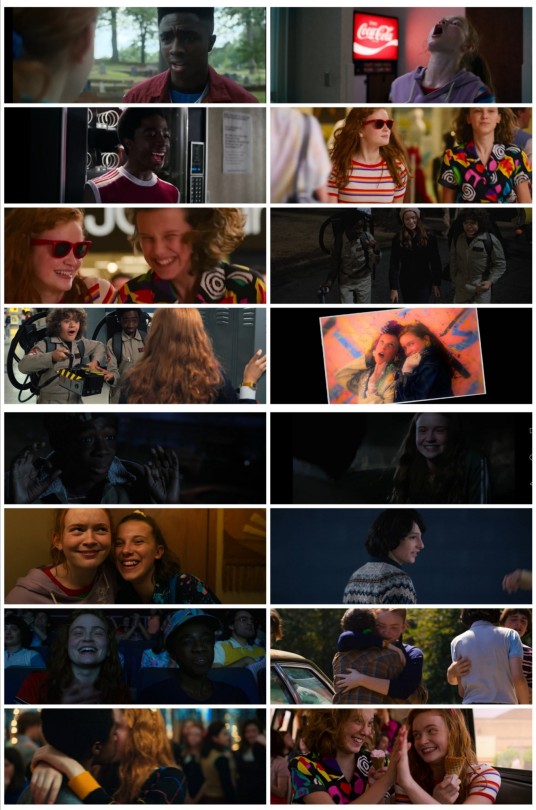
Time jump (correction)
Lucas telling Max that he's there, right in front of her, and she's kind of ignoring him is foreshadowing the scene they shot with Sadie and Caleb: Max in coma, "ignoring" Lucas who tells her that he's there. "I don't want a letter. I'm right here."
It's either that or the scene in S4 in which he reads the book. And the sequence includes Season 4.

The "I'm right here" scene in the memory corresponds with Lucas sitting at Max's bedside (but she is looking just like Sleeping Beauty because she's not in cast and Ross saying that she's in a coma - which means in this scene),and her "ignoring" him. It's possible that this is this scene. It's also possible that it refers to S4. - His watch shows Thursday 11 2 (!), so November 2nd and that's 1989.
Next is Max swallowing the red Skittle (You were wearing that yellow Benny's Burgers t-shirt and it was so big it almost swallowed you whole - like a Pac-Man swallowing the red ghost in the scene, red jacket Max enters the Arcade.), then El and Max link and we hit the time barrier...
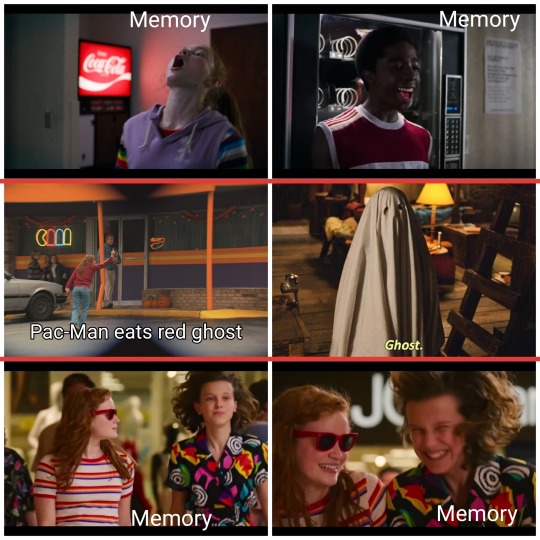
Note how in the memory scene they cut the original moment before the linking and after the linking - that's a time jump in itself:
Season 3 mall scene = time jump in Back to the Future. (JC Penney - they used the brands without getting money for it, it's not because they want to make commercials but used them for specific reasons like KitKat, Skittles, M&Ms) The linking/vanishing and reappearing part isn't in it.
The original version is cut in three segments (not sure about the exact terminology here, so I better leave that out, in German which differ from English terminology its probably: halbnah, Totale, nah). If you see the original footage as a single sequence, the edited memory version is visually a temporal jump.
Here again the comparison between this scene (without the final shot) and Back to the Future:

So this is the time jump - it's the third element in the memory sequence (and those are completely out of chronological order) and my guess is, that there are like two jumps potentially. - There's also some contradicting Infos about the time jump, like some say "immediate" time jump but other sources say from Episode 1 to 2. It's still possible that there are multiple time jumps and the hand holding scene IS right before waking up.
(Caleb is wearing a jacket in the bts shot and we don't see what he's wearing under it but in the hand shot he's definitely in role.)
The Back to the Future time jump reference in the memory is happening right after the "I'm right here/Lucas at Max's bedside" scene - however these moments are probably much closer than I initially thought.
And these segments of Lucas touching Max, the red Skittle are connected and the BttF time jump sequence may show us the result of this.
My guess is that there's at least one scene, maybe more, before the actual jump, involving Max (that has not been filmed yet - it would need summer weather) and we get to see already a partial resolve of the jump with Lucas holding Max's hand. Still comatose but a coma is only important if and how someone wakes up.
The coma is a "time jump"
"I'm right here" is either Season 4 ending or the scene from S5. Thinking about it, both would make sense. The first one even a bit more if we think of the coma as the actual starting point for the memory sequence to foreshadow everything the follows after.
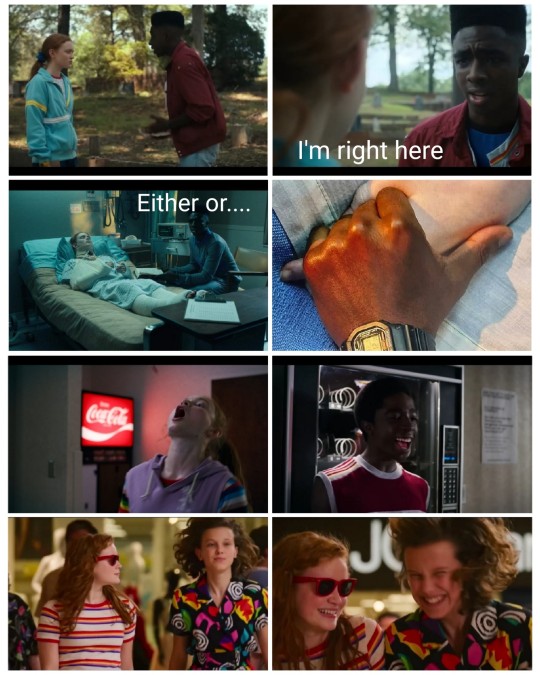
Falling in coma, swallowing the red Skittle, time jump sequence and the rest is the boys who meet the killer, the ghost trap scene, ElMax foto session, fotos (in media metaphorically) freeze people in time like:

(There are some Whovians out there that say, that some Doctor Who is also in Stranger Things. And those stasis cubes are visualized as paintings. - An endless summer skateboarding sounds very much like a stasis cube or a pocket dimension. )
.. the movie date (storytelling technique called promise gets it's payoff) ElMax hugging...ElMax & Lumax Endgames.
And they could only use existing scenes but those are very deliberately chosen (there's a scene not in this sequence that has it's own rhyme and I only just discovered it but it demands another moment like it, it involves ElMax, certain posters but most importantly: a sea shell lamp).
And it's been foreshadowed how we would react to the time jump that the JC Penney reference alludes to - I didn't make it up, the Duffers made this connection in the show by showing us the exact moment including Doc saying "The temporal displacement occurred at 1:20 am"
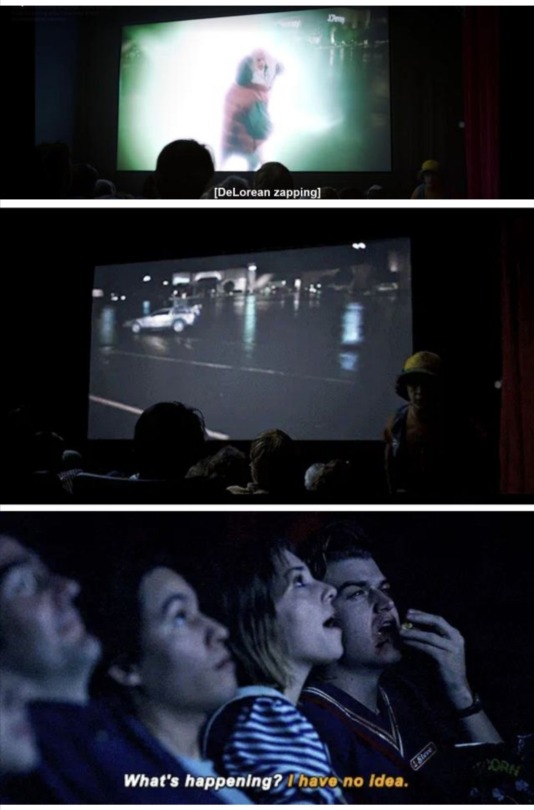
Yepp...these two idiots. That's us.
Conclusion?
The coma is a time jump. "I didn't disintegrate anything. The molecular structure of both Einstein and the car are completely intact. I sent him into the future.", Doc Brown.
In the memory scene, except the "coma" segment as a starting point and the Endgame (It's you and me won't be unhappy), the answer to EVERY memory sequence is ElMax, shown as inseparable after linking. That's neither queerbaiting nor is it just a "regular" relationship. This is not even slightly one of these stories.
Nonetheless is gives us some basic elements of the plot.
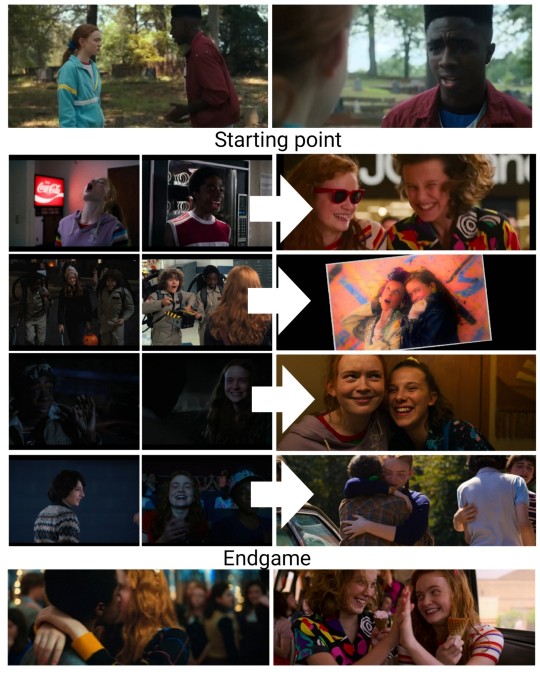
And it's ElMax making Lumax Endgame possible: High five. 1st place. Winners....whatever you want to call it.
Soo... The sequence foreshadows some basic elements of Season 5 in regards to the character relationships. - And ElMax appears like inseparable in these moments, either linked, very close by, hugging ...
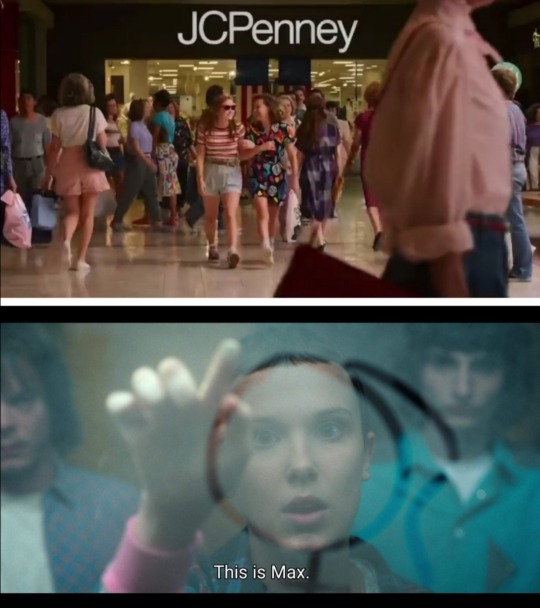
It doesn't get more obvious. They tell it straight into our faces.
And I would say that it's obvious that they make a huge deal out of Max's coma. Just her having powers? That's it? How is this such a huge deal? The Vecna has absorbed her and stuff can easily be debunked too.
Will
And I have Will proving that they do this shit with the window and foreshadowing ...just differently. This is almost not so surprising, is it? That they show us that he has a "crowbar" in his head. - Oh, yes, people.
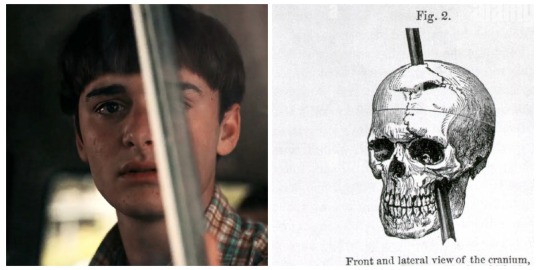
And while the class scene in Season 2 is about him. It's also about Max, she however has light reflections like "God rays" pointing to her head when the focus changes with Mr Clarke's words on top. Seriously, people. This is a subtle as fireworks in the middle of the towns square.
ElMax Endgame
ElMax will turn out to be a dissociative identity/multiple personality disorder system of two individual minds residing inside the same body. Max's body. They'll be together. Literally.
This way Max is healed by the cure/medicine: El. - This way ElMax and Lumax can happen and it's in line with the themes of the show. And it fits in regards to the inspo for Eleven taken from Elfen Lied - kids having supernatural powers do do some lab science MK Ultra style etc etc, why not Fringe? Because Elfen Lied has a main character that has DID.
"One skull, two tenants"
Previous post:
#max mayfield#elmax#stranger things#el hopper#elmax nation#elmax my beloved#elmax supremacy#elmax is endgame#stranger things analysis#eleven and max#max x eleven#lumax endgame#lumax#will byers#elumax
21 notes
·
View notes
Note
Hello sensei i request guidance
I have recently been reminded on my packet of ohuhu markers i bought a while back. Funny thing though,
I dont know how to use them (never used markers before let alone the alcohol ones or whatever the ones i got are)
Your use of markers is majestic, if i may ask, can you bestow upon me divine wisdom and show me where to start so i can learn please? Theres a lot of stuff online and its incapacitating me
Thank you for your time O great one!
*strokes fake beard* ah yes. my divine wisdom which i most certainly have and not my haphazard "winging it" XD
in all seriousness I'm really also still pretty new to markers;;;; So I wouldn't say I'm great at them yet ahdhhedjjd. I can only give a few points of advice:
1. Paper - I'd argue this is the most important part bc 70% of the art quality WILL be based on how well your paper takes ink. The papers I use are either Ohuhu's own marker sketchbook or watercolor/mixed media paper (about 200 gsm).
I would recommend the marker paper since it's actually specialized for markers and makes the color pop more. Watercolor paper also works, but it makes the colors look a lil duller. In my experience, it's blending markers on watercolor paper dries slower, which makes it easier to blend smoothly/with less streaks. I heard it also sucks up your marker ink more, but I haven't been using markers long enough to know.
2. Blending - There should be a colorless alcohol-only marker in ur set. You use that for blending (mostly). Lay down the colorless "ink" first, AND THEN draw over it with the colors you want to blend--while the alcohol is still wet ofc.
This is difficult to explain without visuals--but, I also tend to use the lighter/fainter colors as a "blending color" also. Blending colors in the same hue or are analogous is easier. Mostly. Meanwhile I had to fight for my life trying to blend orange with blue or even just a cooler gray without looking muddy.
3. Bleeding - THESE THINGS LOVE TO BLEED FR. On both marker paper and watercolor paper, I always have to compensate for how much the ink bleeds/feathers once it actually touches the paper, especially when you're using brush tip markers. I hate it ✨
Also if Ohuhu includes this plastic? film? thingy with their markers iirc. You put that on the back of the paper you're drawing on to catch any ink that bleeding through the page.
4. swatch your markers - imo markers are WAY more rigid in terms of color and blending. Yet frustatingly, they also can look very different when wet vs. when dry. SO! it helps alot to make swatches of your markers so you can get a consistent idea of what they'll actually look like.
5. Use colored pencils instead of markers for drawing details - After doing the broad colors with marker, I like to go back in with colored pencils to add detail and for some color correction. I can't do details in marker. I'm not powerful enough for that hfhrhehe
6. Ohuhu's marker caps DON'T match the color they are. It's dumb and another reason why you should make swatches fhhdjej
Aside from that I don't think I have much else. The rest of my knowledge comes from watching other artists' tutorials:
youtube
youtube
in summary: i have no idea what im doing 👍 hope this helps! ✨
#asks#silvershayde#i only have the ohuhu honolulu 120 set (i think) and the skin tone set#idek if its a general markee thing or just ohuhu but their color choices feel very limited for what i want to do#so i def recommend looking about what sets the colors come in and see what works best for you#i was going to put the dark-to-light rule here but I realize I don't really follow it
5 notes
·
View notes
Note
I'm both a longtime Beyhive and a longtime Swiftie, so I'll chime in about the Billboard list
*very long*
Honestly, comparing Beyoncé to Taylor is a disservice to Bey. This woman has not only been highly relevant but has been thriving in the vinyl, CD, and digital eras, and she is still highly relevant in the streaming era. Sure, Bey doesn't pull as many streaming numbers as Taylor does, but she still is a streaming force. Chart positions and sales aren't even the metrics by which Billboard compiled this list. Here's what they've said in their article:
And we must also issue our obligatory reminder that unlike with our Year-End Charts, these Greatest Pop Stars are NOT mathematically determined by stats like chart position, streams or sales numbers. Those play a big part in our final rankings, of course — you can’t be one of the greatest pop stars of the century without great pop hits and great pop albums — but so do things like music videos, live performances and social media presence, and more intangible factors like cultural importance, industry influence and overall omnipresence. (And we’re measuring this over all 25 years of this century so far, so if you were only heard from at the beginning or the end of that period — or only had one or two big songs, albums or eras — that’s gonna significantly hinder your ranking here as well.)
She is the blueprint for most, if not all, pop stars of the mid- to late 00s, '10s, and '20s, and they've said so themselves. Not only that, several athletes, business owners, fashion designers, architects, producers, and even professional chefs have said that her work ethic, artistry, drive, and attention to details inspire them to do better. She's transformed the industry forever. She's the first artist (correct me if I'm wrong) who's done a visual album in the form of a music video for each song (B'Day in 2006) and one of the few artists who's done a concept film for an album (Lemonade in 2016 and Black Is King in 2020). In terms of music videos, Beyoncé is far ahead of Taylor, and since it's a criteria for Billboard's list, she's got an advantage.
Beyoncé's the real trendsetter in music, while Taylor chases what's popular at the moment and makes it a theme for each album both in terms of music and visuals. Beyoncé's also THE most versatile music artist in the industry: her range goes from gospel to rap, from disco to rock, from pop to bluegrass, from R&B to Americana, from opera to reggae. She is an exceptional artist with a unique™ vocal talent that continues to improve with age. There are such things as prime Whitney, prime Celine, and prime Mariah, but there are no such things as prime Beyoncé. Besides that, Beyoncé's also credited as the inventor of "talk-singing," which all of the modern singers and rappers use as their primary technique in music. Even Kanye has said so.
Live performances are also a criteria, and I think it doesn't even need to be discussed. Beyoncé's regarded as one of the best performers of all time. I personally would even say that she is THE best performer of all time, but it's irrelevant to this discussion. She's the first female performer to ever do an all-stadium tour (Formation Tour in 2016); her Super Bowl HT show is widely regarded as the Top-3 of all time, along with Prince and MJ. She's popularized feminine dancing in the industry; before that, the girls were basically cheerleading and jumping around the stage.
In terms of social media presence, I think it could be quite debatable. There are several viral Tik Tok Beyoncé trends going on at the moment. There's a "Lose My Breath" trend (the song came out 20 years ago), there's a "Diva" trend (the song came out 16 years ago), there's a "16 Carriages" trend, and a trend for Trump's "Dance Party with Beyoncé," to name a few. Also, everything she does or doesn't do makes headlines or is heavily discussed in online spaces. For example, her wearing a silver dress with 613 color hair, making her "look white," made rounds for weeks online. Her playing her film in Is**** made a ton of online discussion, while Taylor has also played hers there, and I've barely seen mentions of it online (both of them had nothing to do with it and couldn't stop it, imo; they signed their contract with the distributor months before Oct. 7 happened). People called Beyoncé "genocide Barbie" for being present at the Kamala rally and said that she "made" Kelly Rowland wear an oversized suit so she'd look better even though Kelly has worn those suits for a long time AND she always looks incredible in them. Don't get me started on the whole Tik Tok conspiracies and "she knows" thing. Even the false rumors of her making an appearance at the DNC have made it to mainstream news channels. There's also a phrase "The Beyoncé of..." that exists. Undoubtedly, Taylor has an immense media presence, but unfortunately, it's mostly her being at Trav's games, pap walks, or someone making up baseless rumors about her that no one outside of the Swiftie circles and pop culture nerds care about. I don't think anything outside of her excessive jet usage or new album variants makes noise outside of those circles except when the new material comes out and then it's 2 weeks of deciphering the songs. I think Taylor needs this kind of media presence to thrive, while Beyoncé does not. Taylor is a very talented writer, which has gotten her such a big following, but at the same time, it's her marketing that has gotten us to this Taylormania point. She's actively cultivated a quite parasocial relationship between herself and the Swifties by inviting them to her house, saying that she needs them to feel good about herself (I'm paraphrasing), and leaving easter eggs about her relationships and personal life in her music and music videos. She hasn't established any boundaries with her own fanbase, and that's why it's starting to feel cult-like at times. While Beyhives were and still can be quite insufferable at times, she knew when to pull back and cut the majority of the toxicity from her fandom so it doesn't impact her own life. Also, it's worth noting that the main drive of Taylor's popularity is her relatability. Beyoncé's brand has never been about relatability; in fact, it's always been the opposite, and I don't know why people are complaining about it: she's always said that she comes from an affluent family and went to private school. Because of the current state of Taylor's fame, I'm going 50/50 on this one.
Then there's the cultural importance part. I think Beyoncé's also ahead of Taylor here. Beyoncé's music has always been political, and she's made a pivot into teaching her listeners about Black history. There are multiple college courses about her artistry and image. She's also the reason why music is now being released on Fridays. She's created that silver craze last year with her tour; this year it has been cowboy attire. Black country artists are finally getting a platform: Shaboozey's song is now the longest-running Billboard Hot 100 solo #1 song of all time, and Linda Martell (a Black country artist from the 60s) just got her first Grammy nomination, and it's in a rap category (I mean, c'mon). She's at a point in her career where she is honoring her heritage and giving platforms to Black artists in predominantly white spaces (house, country, and I'm assuming Act III is going to be some sort of rock fusion). Also, to put things into perspective, at 34 years old, Beyoncé gave us Lemonade while Taylor gave us TTPD. Both of them have been recording artists since they were 15-16, so I think this comparison is valid. Bey also has way more universally recognized hits than Taylor does. Although Beyoncé doesn't write her songs alone as Taylor sometimes does, she is a prolific songwriter in her own right (the topics of discussion in their music are also incredibly different). She's also an incredible producer. I've seen multiple songwriters and producers talk about her process and praise her for having an incredible ear. Listen to the instrumental version of some of her songs (I'd say that Single Ladies is one of the best and clearest examples) and compare it to the album version. Not only does she have an incredible ear for melodies, she's also been the vocal producer for every single one of her albums, including the first Destiny's Child album. Her music, music videos, live performances, presentation, vocals, musical production, fashion, incorporation of Black culture, hair and make-up choices, and live performance arrangements (Homecoming had like 20-30 samples) are what her cultural importance is. There are generations of pop stars that took notes from her, and there will be generations of pop stars that will reference those who were inspired by Beyoncé after she retires, and that's what makes her a truly important and impactful icon that she already is.
If Billboard has any integrity left, Beyoncé should be an indisputable #1 pick. Taylor being at #2 is also higher than I would expect. I'd place her in the Top 5 for sure, but #2 seems very generous.
thank you for writing this up!
3 notes
·
View notes
Text
A very angry rant / personal essay about Wes Anderson parodies and the reduction of his style to just simple visual aesthetic
Recently, I became very invested in a show on Apple Tv called The Afterparty. That investment in it only grew when I learned that season 2 would be promising a “Wes Anderson style episode.” Naturally, as someone who takes a lot of inspiration from Anderson’s films I was excited to see what this episode would be like. I am no longer invested in The Afterparty and it is entirely because of this episode.
We’ve seen this before, the reduction of Wes Anderson’s entire style to just quirky characters and pastel colors. Anyone who participated in the Tiktok trend of recreating this style knows this. Of course, this is done with utter disregard for everything else that makes up his style.
This brings me to my detailed review of The Afterparty, season 2 episode 4. I believe my exact words were “I'm so disappointed.” I was legitimately infuriated with this episode, to the point where I can no longer watch The Afterparty.
First of all, just straight up copying exact things from Wes Anderson movies isn’t cool. This episode literally did the exact same montage from the beginning of Rushmore. I was pissed. Furthermore, this episode copies the easy parts of Wes Anderson without acknowledging the work the actually goes into his films. Just color grading your shots and putting text on the screen in a quirky font isn’t enough. There’s a certain cadence that Wes’ screenplays have, a certain way of speaking that this episode simply did not have. Actually I think the only character who had the line delivery down was Ulysses in his scene with Hannah. His short amount of screen time was the highlight of this episode for me.
Another thing that pissed me off is that Wes would never write lesbians like that (he would write them so much better.) Every analysis of Wes Andersons style as a whole has pointed out one thing in common between his films, they are all about relationships. Wether those relationships are platonic or romantic, maybe even familial relationships, they focus in how people interact with people. And that’s another place where I feel this episode fell short. Hannah and Grace’s relationship felt like it was on the back burner, like it wasn’t important. Of course maybe it wasn’t meant to be important, maybe the main relationship of the episode was supposed to be Hannah and Edgar. But then maybe they could have given the two more than five minutes of screen time together. It felt like they missed the mark on any of the relationships in the episode, even having Hannah be extremely manipulative towards Grace for no reason.
The part that makes the the angriest is, why didn’t they consult with Wes Anderson about his style? For non-fans of The Afterparty, you may not know that every episode is told in a different genre. This episode is actually the first one to describe its genre with the name of a specific director. That’s a big undertaking, even with a director whose style isn’t as bold as Anderson’s. The least the show could have done would be to ask Wes how he does it. Or just not make the episode.
I am very interested to know if Wes even knows about the episode or if he had any opinions on it. Especially now, with the release of Asteroid City which is now reaffirming for newer fans that Wes Anderson is not just a visual aesthetic or a quirky character. Rather, his films have deep stylistic choices that cannot be replacated . Wes is doing things that no other director is doing, and while I understand why that may make people more interested in copying his style, it is not the right thing to do. I truly don’t believe anyone except for Wes Anderson knows what Wes Anderson is doing. And that is okay. I just wish modern media would leave it alone.
23 notes
·
View notes
Text
Persona 3 Reload!
. . • ☆ . ° .• °:. *₊ ° . ☆
So since the Persona 3 Reload trailer was released early, I have So Many thoughts on it! I'm both super excited for a lot of it, and a little disappointed about other parts?
Firstly, the graphics are gorgeous. Of course there's going to be improvements, the original game came out like 17 years ago now, the technology, skills and software that go into this have improved massively over the years, as well as consoles being able to handle and display much higher quality graphics.
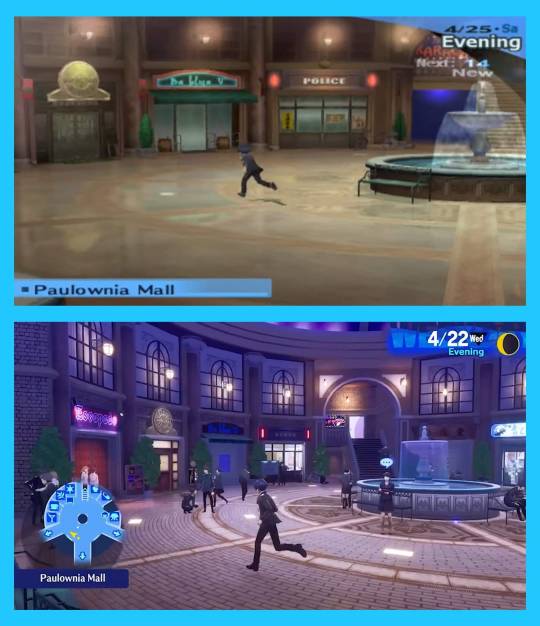
The environment just feels so much more alive. They've put so much little detail into the areas of this game already, and I do really wish people claiming that they're Just Money Grabbing and dragging out the franchise (although usually referring to Persona 5 more) would take a minute to look at all the care that they put into these games. It's such small things, like the individual brickwork on the floor, and the faint scenes behind the windows. Even just the detailing on the fountain and how the water falls, every little detail comes together to make the environment alive. I'm also a massive fan of blue tint implying darkness, so much modern media sacrifices visibility for darkness sake, and although a small detail it feels very important to mention, as well as how it creates such a great contrast to the light sources? It's a method that was used a lot in film making specifically, although now, again, they seem to prefer to make it impossible to see rather than create an implication and more enjoyable and accessible experience.
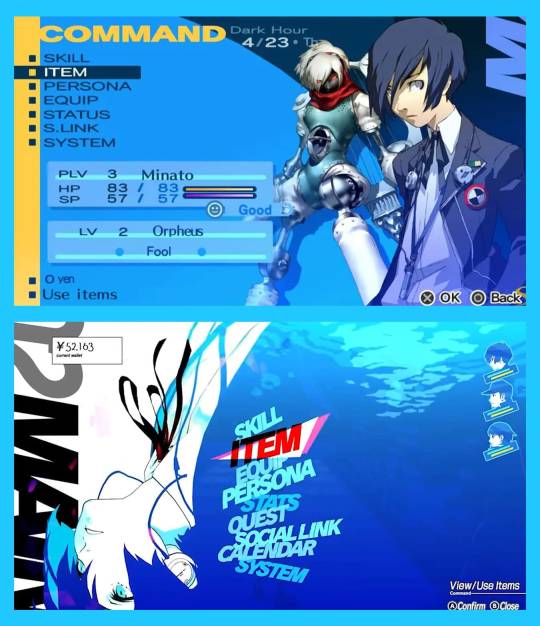
Even the menu is incredible. It's visually stunning whilst also being well designed from a UI perspective. Seeing them side by side really gives an indication of how far the games have come. Although two very small changes, Persona 4 switched the Equip and Persona options, and Persona 5 switched the Quests (Missions in P5) and Social Link options. Both of these changes, whilst minor, do show an improvement in UI. The Equip option is going to be more used than checking your Persona is, as theoretically you will be switching out equipment regularily as you gain better gear (although I will admit I am awful at changing my gear around), and you'll (once again, theoretically) be keeping more tabs on your quests than your social links, as social links often inform you in game their level and when they're close to improving, as quests are something you will be checking perhaps even daily as you progress through the game. Moving your currency out from the bottom of the menu makes it easier to find as well, as there's not really any reason to have it there to begin with?

The character models are absolutely incredible as well! Of course, again, 17 years improvement, but what improvement it is! Aigis, my beloved, she looks stunning. I cannot get over the lighting, although this does lead a bit into the things I'm disappointed with.
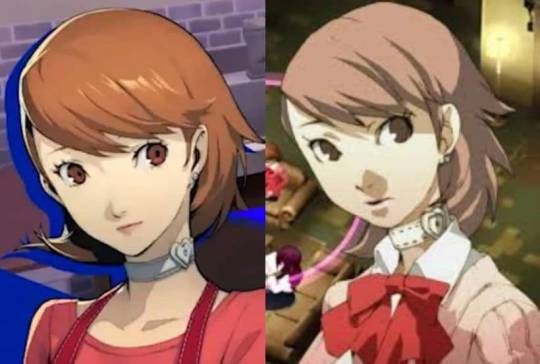
The sprite art is amazing as well. They've brightened the characters' palettes, and with the higher quality graphics, it's allowed them to add subtler details (like the stitching on Yukari's choker). However, it feels like this was at the expense of some of the character the Persona 3 sprites had. The range of facial shapes seems to have been lost, and even details such as Aigis being the only character with larger pupils is no longer as clear.
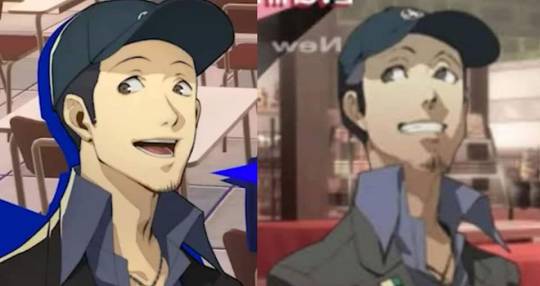
A lot of the emotion in the Persona 3 sprites has been sacrificed as well, which is disappointing seeing as it's one of, in my opinion, the best features in the Persona 3 sprites. This is really present in Junpei, as along with losing his distinct chin and little beard, his sprite lacks the personality of the original.
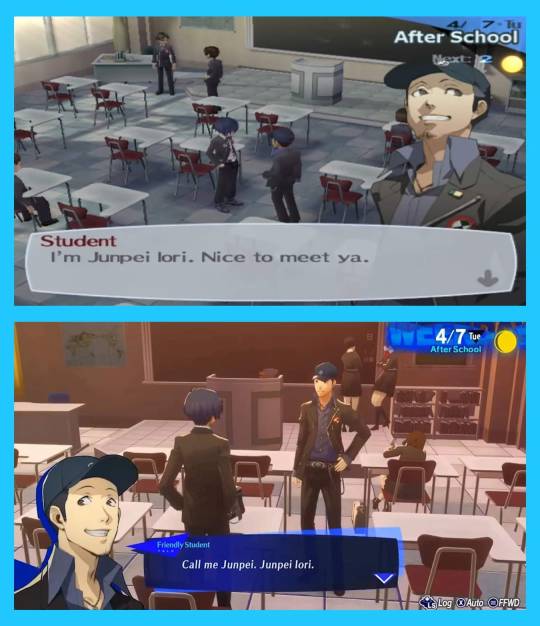
Even in his voicelines and such, they lack the energy and personality Junpei has? Something as simple as the implication of an accent in text can give a character so much personality, can tell you about the kind of person they are or how they grew up. With Junpei, he uses 'lazy speech', where he pronounces the word in an easier way rather than the 'proper' way (using ya instead of you). It instantly gives the vibe that he's more laid back and that he isn't as strict as somebody like Mitsuru who uses full sentences with consistent, proper pronunciation. Although you could argue that him telling the player to refer to him by his first name tells you this as well, this requires prior knowledge of Japanese culture and honorifics, and how these are used in a day to day life, and therefore just doesn't have the same effect in the English localisation as a written accent.
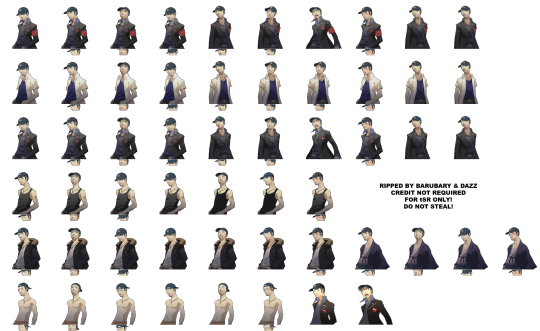
Looking deeper at the sprites, the main reason they had so much more emotion and character was the range of motion. Although some sprites are reused with different expressions, there is a range of poses. This allows for emotion through body language, which not only helps express emotion but personality as well. Once again, the pose used most frequently tells us Junpei is this laid-back guy, and simply having such a range of head placements creates more character and emotion in these sprites.

Persona 4 was when they changed to a static base sprite with a range of emotions, rather than the differing pose and head placements in Persona 3. Looking at Yosuke's sprites, it's very clear they're one sprite with varying expressions. Although this already removes some of that character and emotion from Persona 3, the Persona 4 characters at least have a great deal of different expressions.
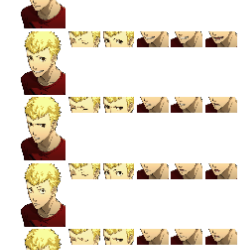
Looking at Ryuji's sprite in Persona 5, there's much more animation within it. Having options for eyes open and closed, and mouth movements. However, he has a total of 6 emotions, with the same base for all. Persona 5 uses cut ins for stronger emotions, however this only works for those strong emotions.
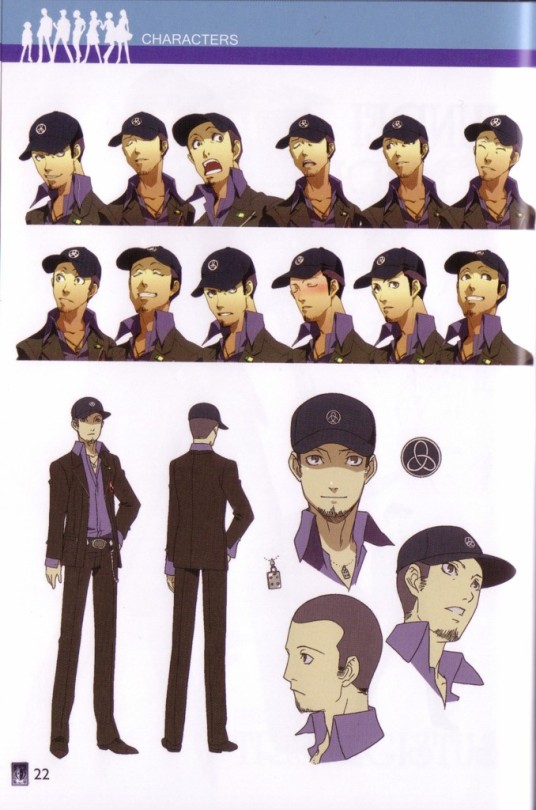
The dynamic sprites in Persona 3 really added to the game, so seeing that it seems they're carrying on with the trend of the previous two games is kind of disappointing. It is for sure something that could have been achieved with the current style of Persona, and although I understand its easier for them to go off of one base for both time and consistencies sake, it is something I wish they had, or maybe even will, adapt into this game.
. . • ☆ . ° .• °:. *₊ ° . ☆
In general, I'm really excited about this game? Although the sprites really are something that disappoints me, the fact that my biggest grievance is something so small really does leave me excited about the game itself. With the only switch port we have not having any of the cutscenes, I'm really excited to be able to fully experience the game on a modern console, and one that is to me much more accessible than the PlayStation is. I do have high hopes for this game being good!
#persona 3#persona 3 reload#persona 3 remake#p3re#p3 reload#p3 remake#persona#atlus#atlus persona#shin megami tensei persona#peach talks
14 notes
·
View notes
Text
Door Reviews: Soul of Sovereignty Prelude (2023)
There was a time when I was very much into webcomics. Don’t get me wrong, I still am into them in theory, but I have not had energy to read as voraciously as I did before. I haven’t had time to get into new ones either. I am still fond of them, however, and keep up with a couple webcomics.
It is during my webcomics phase that I discovered the works of ggdg. I found myself reading Cucumber Quest and enjoyed it a lot! When the comic went on indefinite hiatus, I kind of lost track of what they were up to, though I have faint memories of reading Lady of the Shard.
Years later, a friend of mine told me about this game. When they linked it, I realized that wait, this is from ggdg! And the memories came flooding back. It made me so excited to play this game. Well, now I have! I’m excited to talk about it :)
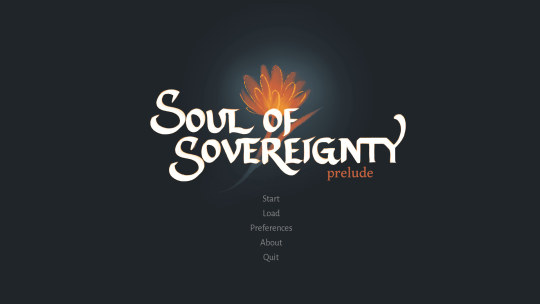
What’s it about?
“Soul of Sovereignty is a tale of deadly kindness and selfish virtue in a world of magic and ruin,” says the game’s itch.io page. It is a visual novel about two souls whose fates become intertwined. They go on a journey that will be of more importance than they would expect.
It should be noted that this game is just a prelude to the whole story. Not all of the questions you will find yourself asking will end up being answered here. Also! I’ll just call it SoulSov from this point on because that’s shorter lmao
STYLE (Gameplay, Graphics, Music)
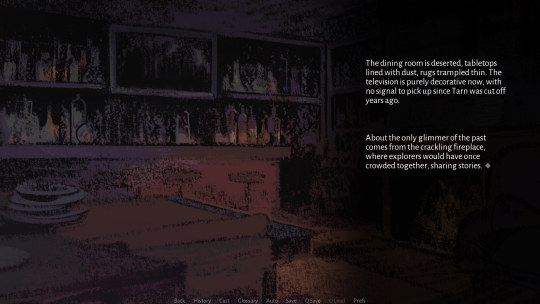
SoulSov is a visual novel. It shows background art with characters in the foreground, displaying text to tell the story itself. As far as gameplay goes, it is pretty simple… but I think ggdg does some subtle things here. The layout, the way the movement of the text flows with the art, there’s a few things that help with the conveyance of the story itself. I don’t really know how common it is in the genre, as I haven’t played enough visual novels, but I appreciate these small things.
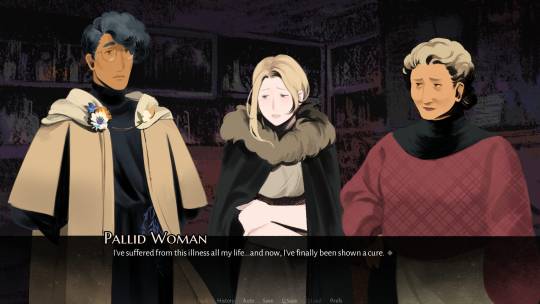
The art is beautiful. Downright ethereal at some points even! I loved seeing the old yet homey inn and the snowy woods. I loved seeing these wonderfully designed characters. They look so solid, yet soft at times.
The music, I find, is pretty good and apt. It’s nice and gentle in some places, and intense when it needs to be. The sound design is also good, shifts in the snow can be heard, creaking floorboards, the howling of the wind.
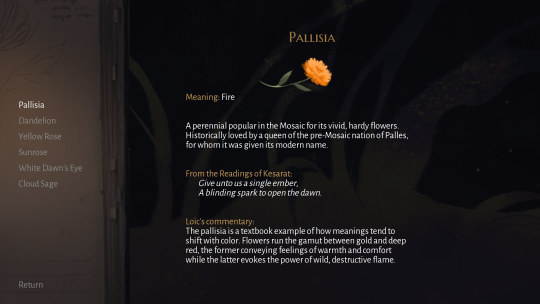
The UI is good. I like how there’s a History tab so that I can easily backtrack when I feel like I missed some words. I also like how there’s a Cast section so I can easily see descriptions of the characters. I like that the Glossary section is an external way to provide more lore to the world.
Overall, I definitely like the style of this game. Beautiful art, wonderful prose, it all combines well and lets me experience a story in a nice way.
SUBSTANCE (Story, Characters, Impact)
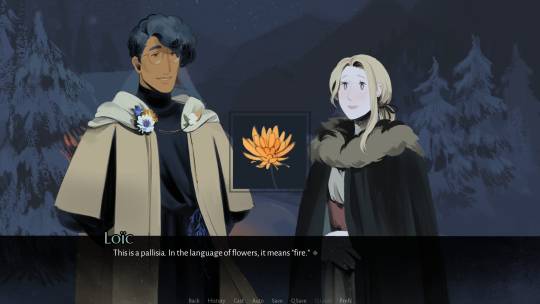
I loved the story. I loved how the world unfolded before me, from a cold, sleepy hamlet to a sprawling empire of a city. I loved seeing all the characters, their quirks, how they interacted with each other. Most of all, I loved how the worldbuilding revealed itself. The importance of flowers, the history of certain sites, the pantheon of the world… ggdg discusses just enough to paint a picture but leaves out enough to make me want to know more.
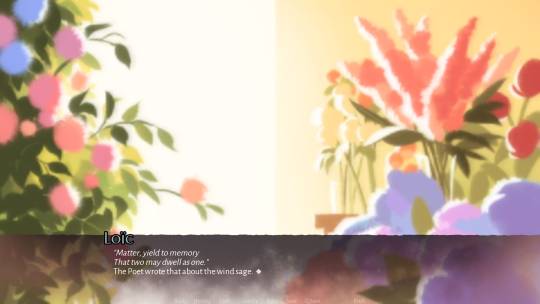
The story takes its time. It wants you to feel the weight of each sentence, to understand each brushstroke of a painting. ggdg makes sure that each click of the mouse moves the story in an efficient and economical way, which makes for a tight story that still expresses itself well.
I have not played much graphic novels, but what I find interesting is how you can “turn the page” so to speak. When I say turn the page, I talk of how certain forms of media dictate the flow of stories. With books, you turn the page. With comics, you go from panel to panel and turn the page. With film, you frame the story with your camera and dictate the very story itself with what you choose to record with it. With games? It’s different with each genre. But for this game, each click of the mouse (or press of the spacebar) turns the page. At some points, turning the page here means it reveals each sentence when you’re ready, showing accompanying art and changes in character sprites. At other points, it reveals each block of text, revealing changes in background and introducing new areas. While describing it this way feels a bit granular, it didn’t feel too slow when I moved through the story. And I think this approach makes the important moments hit better.
Overall, the story fucks. I enjoyed it a lot!
VERDICT
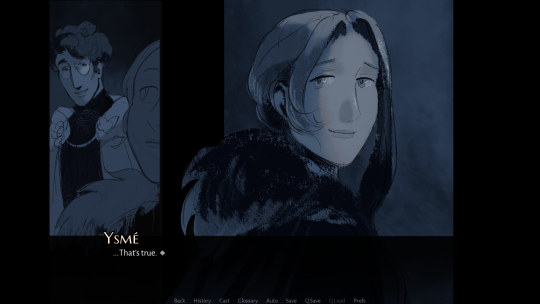
I haven’t played enough graphic novels to judge this as a graphic novel, but as a game I enjoyed SoulSov immensely. The art is great. The story is great. I’m excited to experience more installments of this game and find out more about this world! I am glad to have this game be the first game I finished in 2024. I wholeheartedly recommend it to everyone!
Door Rates Soul of Sovereignty Prelude: 5/5!
4 notes
·
View notes
Note
People just dye their hair for fun. It's not symbolic babes.
okay let's start off with the fact that michela is a fictional character. she's not real.
and color symbolism in media is, in fact, important. and it exists everywhere.
when people see a color, there's often a feeling or thought attached to it- fast food companies use red more than any other color because red elicits hunger. people use blue to represent sadness, pink is youthful and romantic, yellow is happy, and so on. this is pretty standard color theory.
people have been using color in abstract ways to represent stories and emotion for thousands of years. just look at the contrast between this rococo era painting by jean-honore fragonard and this impressionist piece by claude monet
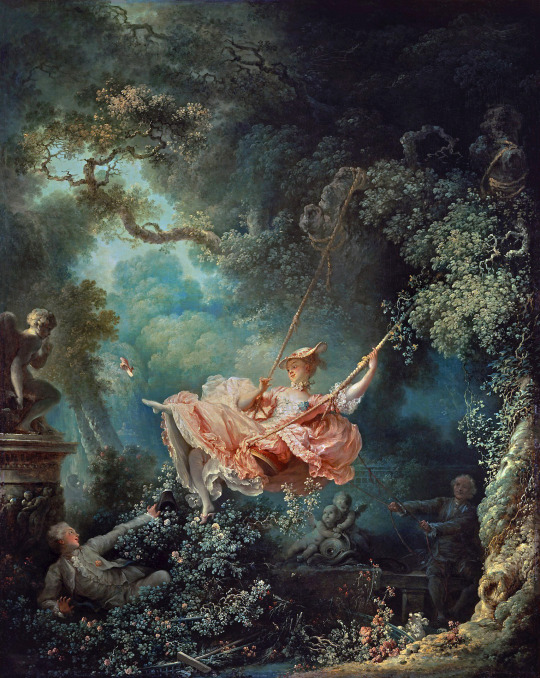
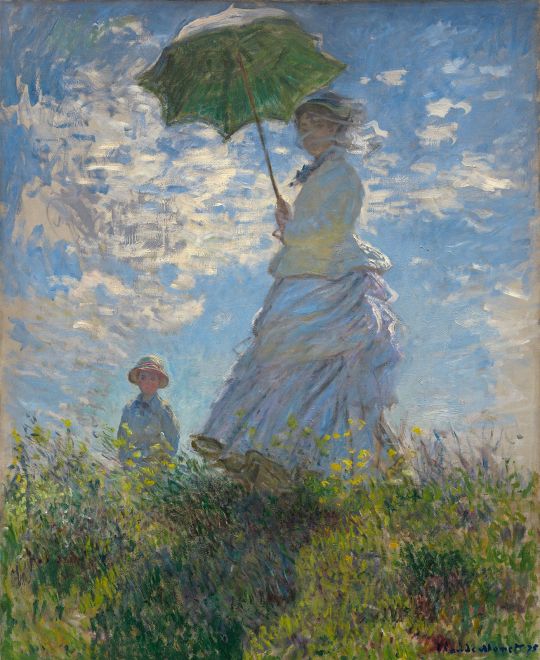
both of these pieces are very similar in subject matter: a woman in a long dress, a sunny day, a natural environment. if I described these on paper rather than showing them to you, you'd assume they're fairly similar paintings.
but you can look at these and feel a clear difference between the two. why?
because of the visual elements! the method, the chiaroscuro, the colors, the blocking.
ALL OF THESE THINGS HAVE SYMBOLISM IN THEM. THEIR POINT IS TO ELICIT A REACTION IN THE VIEWER.
lets look at another!
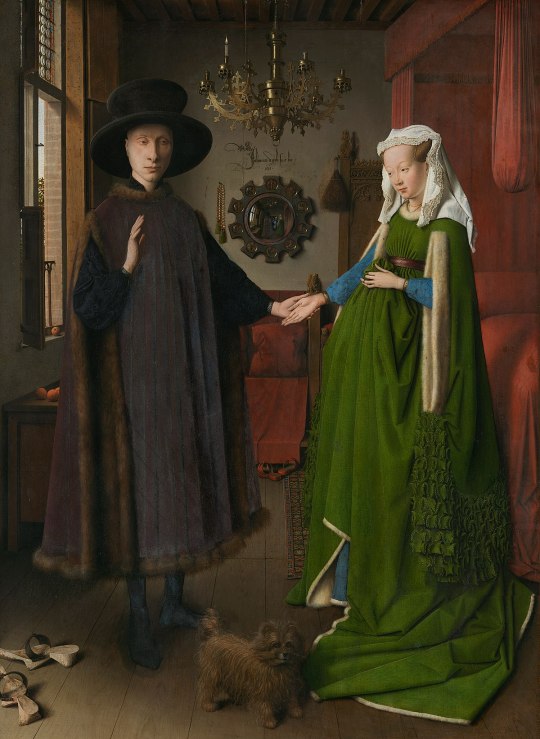
this is the arnolfini portrait by jan van eyck. it's one of the most famous and significant pieces in western art.
you can easily look at this and say "hey look it's two people in a room" but painters, AGAIN, FOR HUNDREDS OF YEARS, have been using symbolism to depict real people. even the green of the dress represents hope, likely to have a child (indicated by the way she's holding her dress up and the dog, which by some arguments may represent lust between the two subjects)
THESE ARE REAL PEOPLE. BY THE WAY. ARTISTS MAKE DELIBERATE CHOICES TO INCLUDE SYMBOLISM IN ARTISTIC MEDIUMS.
anyway, even if it wasn't a deliberate choice on the creators part, there's this awesome thing called "death of the author" which was a french essay that argued that the original intent of the creator becomes null once the work is published, and the audience interpretation is ultimately more important.
so even if it did mean nothing in the writing process, to me it is significant. other people will have different interpretations but it'll be significant, too.
blue is a complicated color. dark blue is regal, calming, but also subdued and depressed. this could mean a lot of things, but looking at it compared to the green, just the fact that it's different, means there's some kind of change happening. even if it's purely physical.
I work in (indie, not big-budget) film and I've always felt the "the curtains are just fucking blue" argument completely defeats the point of analysis.
the reason why English class is core curriculum in schools over here isn't because it's fun silent reading hour, it's to help prepare kids to make choices and understand other perspectives and complicated situations through critical thinking.
when you limit yourself, when you say things like "that's just how it is, it doesn't mean anything" you're not only spitting on the work, you're creating a reality in which you can throw aside hard questions because "that's just how it is" is your answer to other people wanting to understand things. church v. galileo moment.
when you watch a movie, it's easy to just take it all at surface value and not give it a second thought. it's just entertainment, right? it's not supposed to make you feel anything other than pleasantly amused like a court jester!
I've worked on films. I do work on films. every single decision, from the angle of a certain shot to where the actors are standing, is deliberate. and it's so good that you don't even notice it!
in real life, my hair is blue right now. it means nothing except for me liking the color blue.
michela is not fucking real. she does not have the same agency I do to go "oh, I have some dark blue dye left in the bottle, I'll do that this month." because she is not real. she is a character.
for you, I recommend looking up some storyboards from movies, checking out some abstract art (pollock is a good place to start), and watching ralphthemoviemaker's minions review, where he talks about why character design is important.
And none of this even matters anyway because I was making a scott pilgrim joke.
the end

2 notes
·
View notes